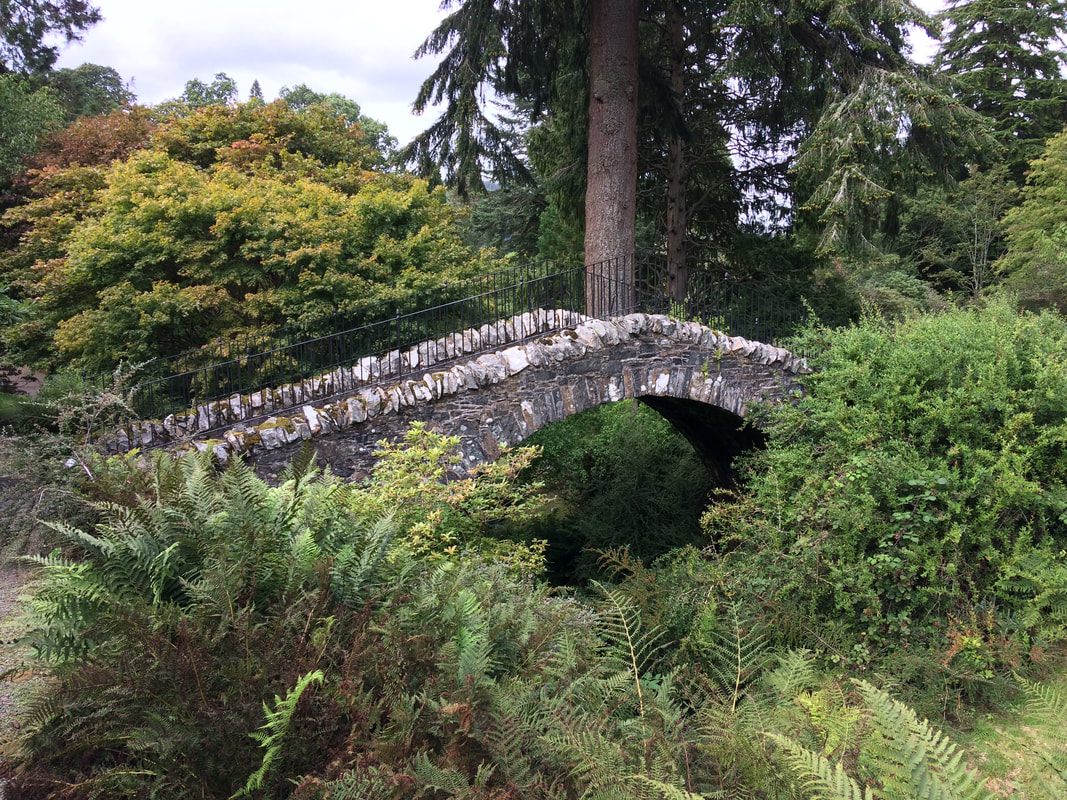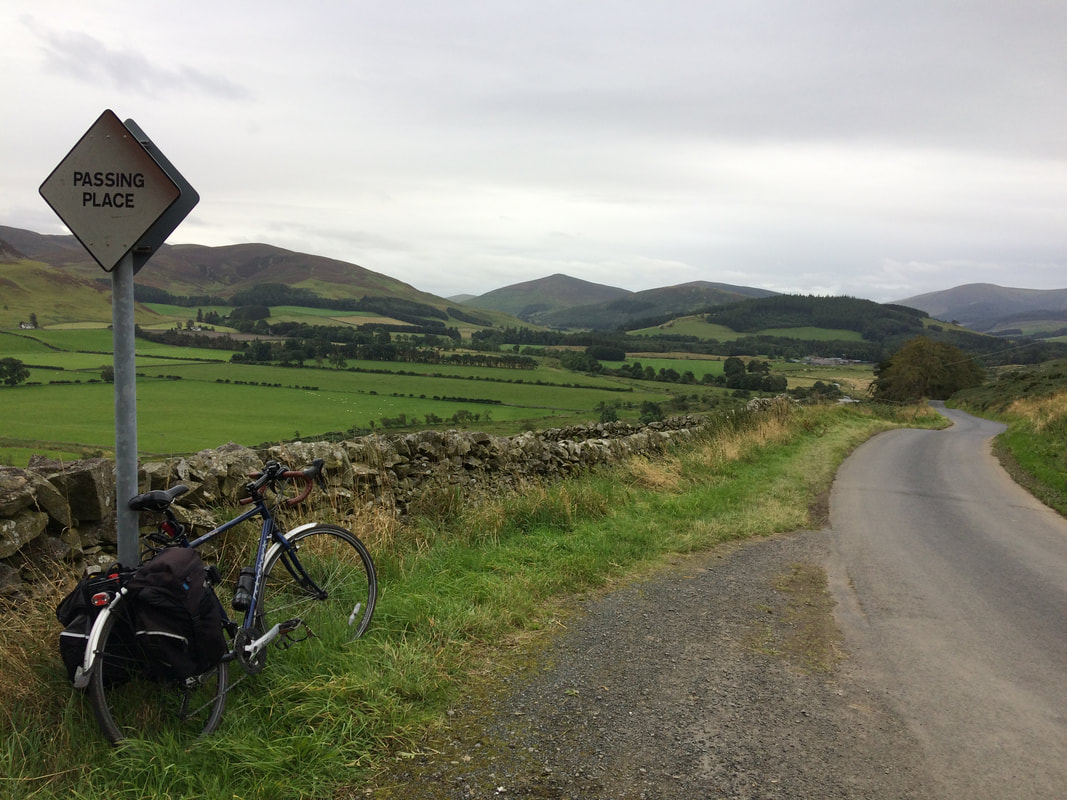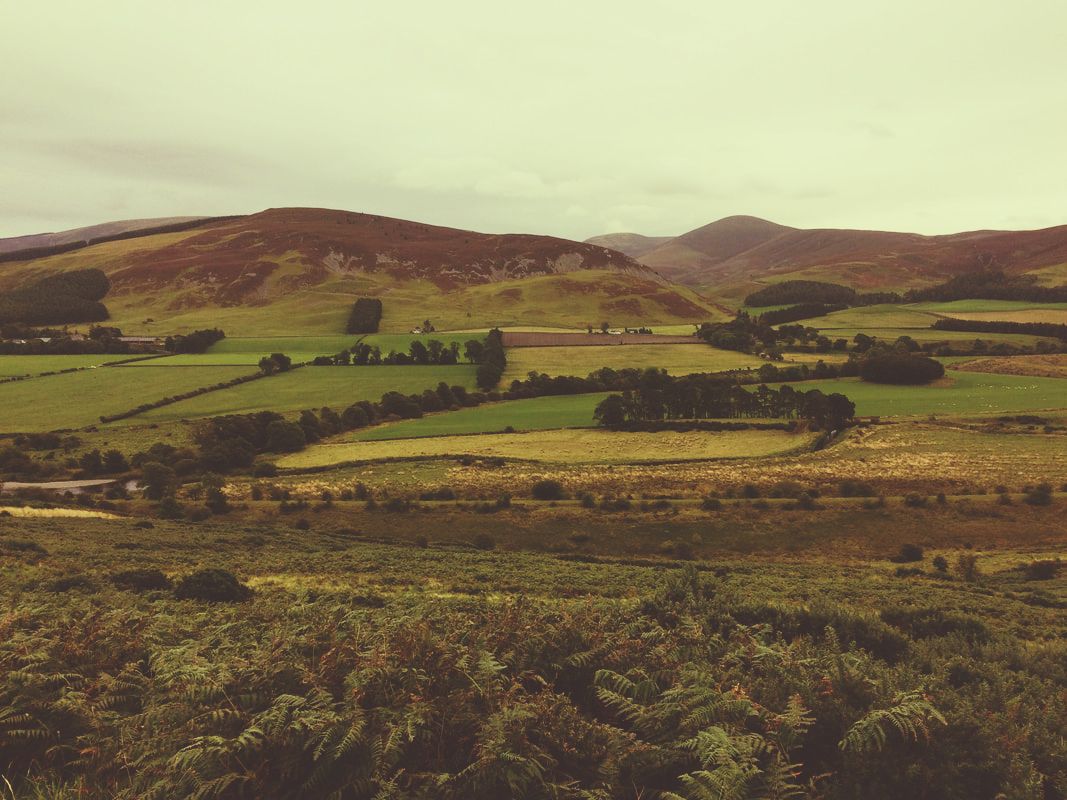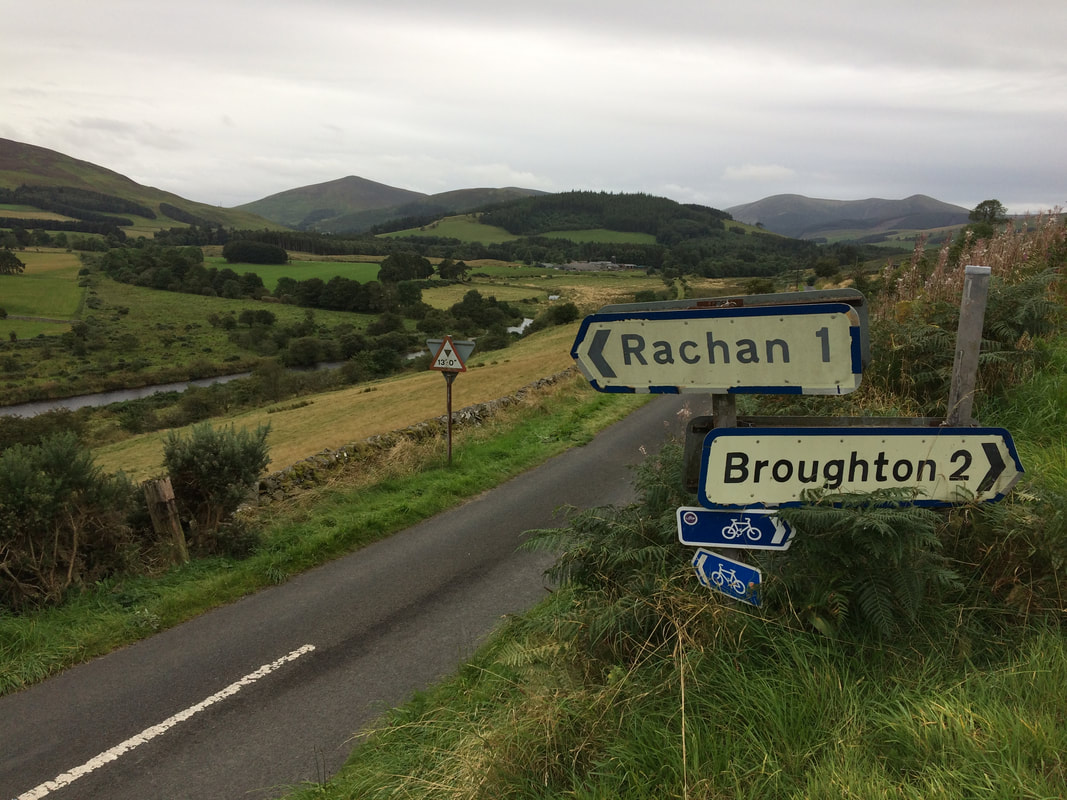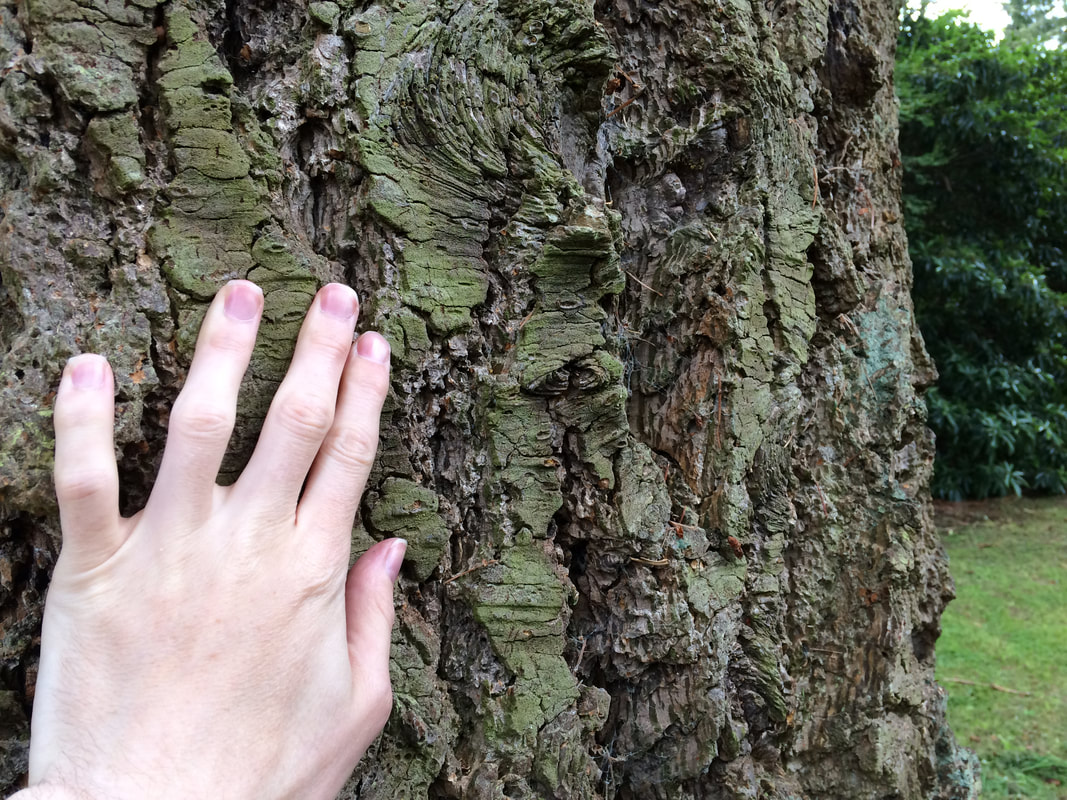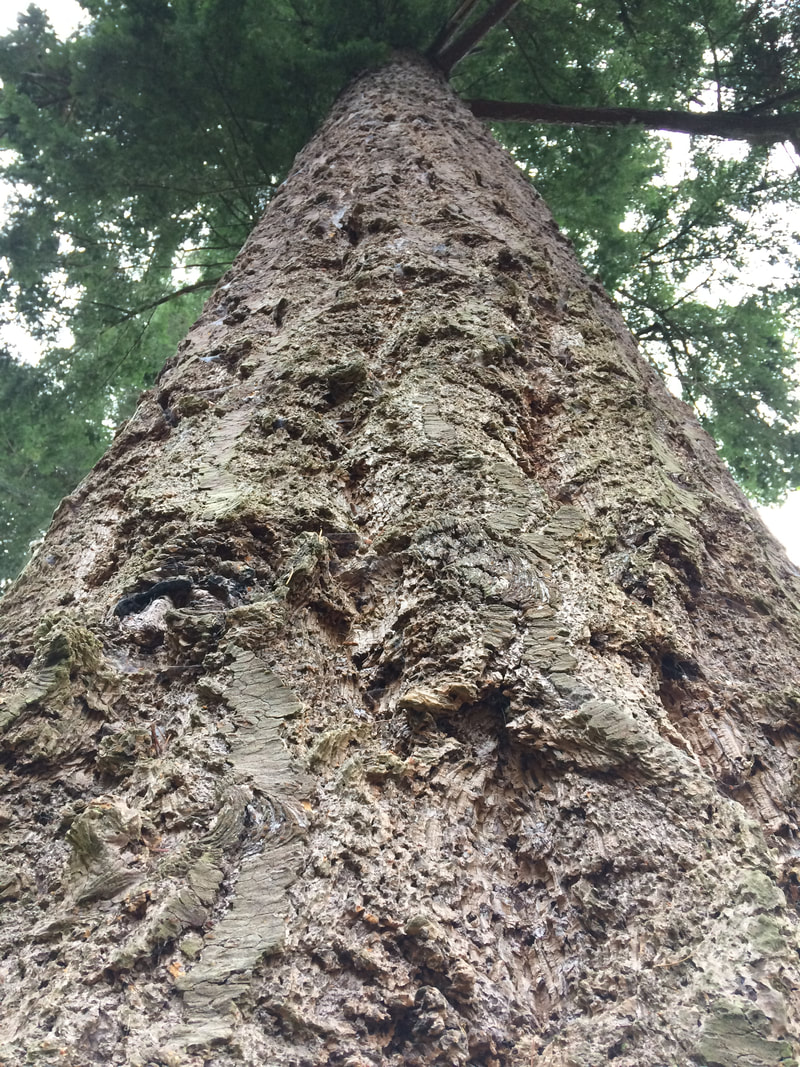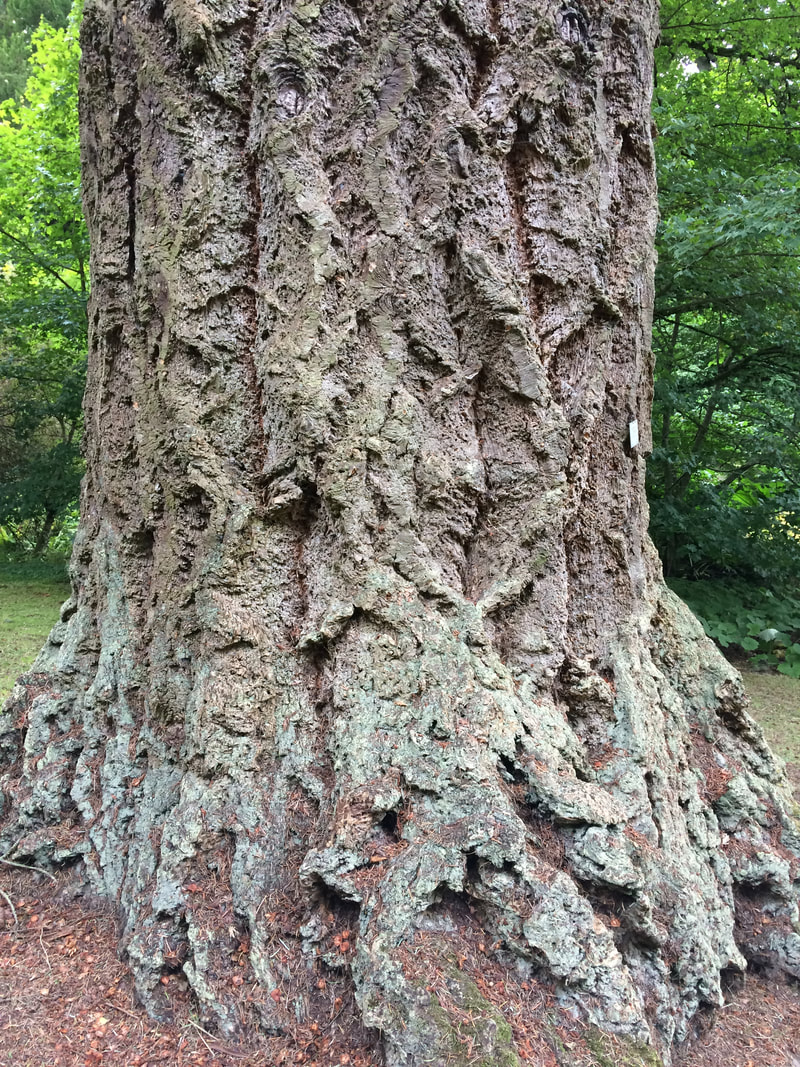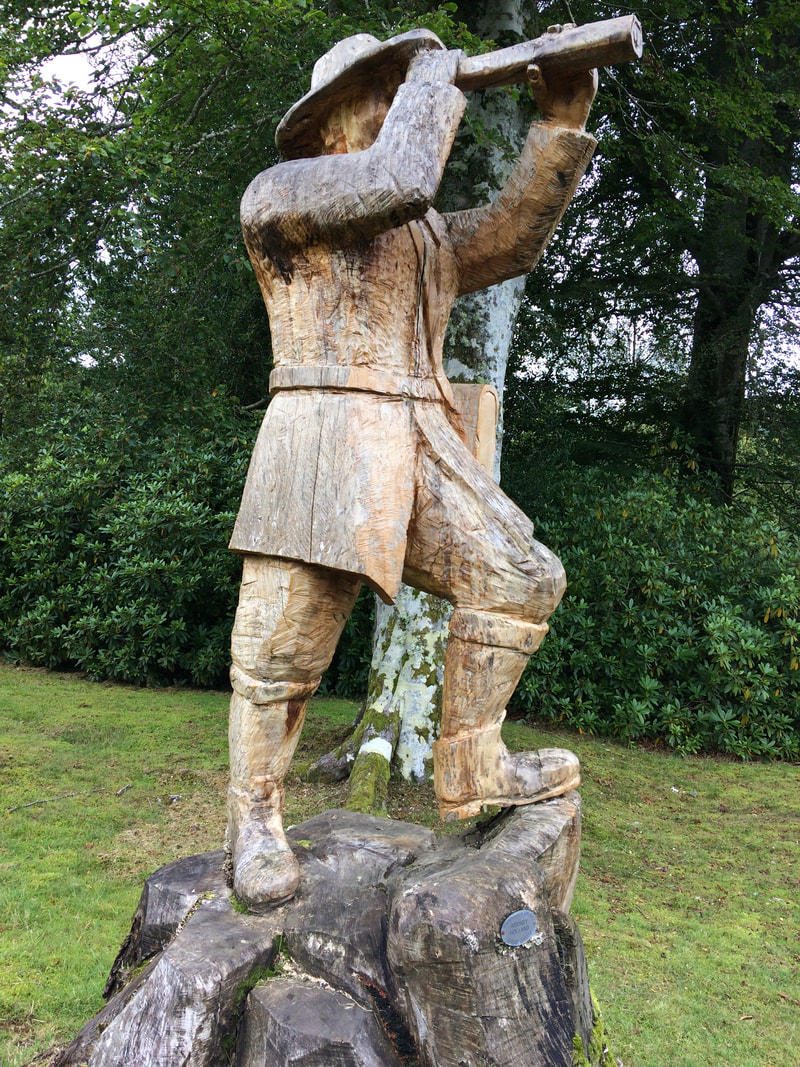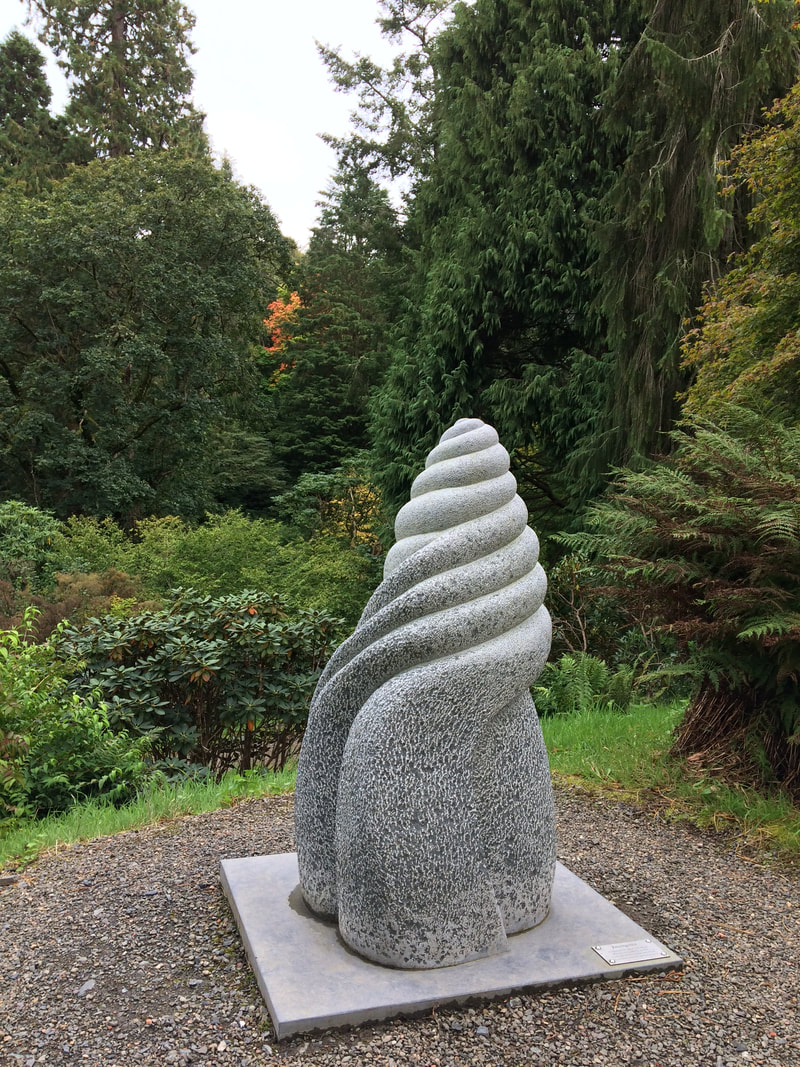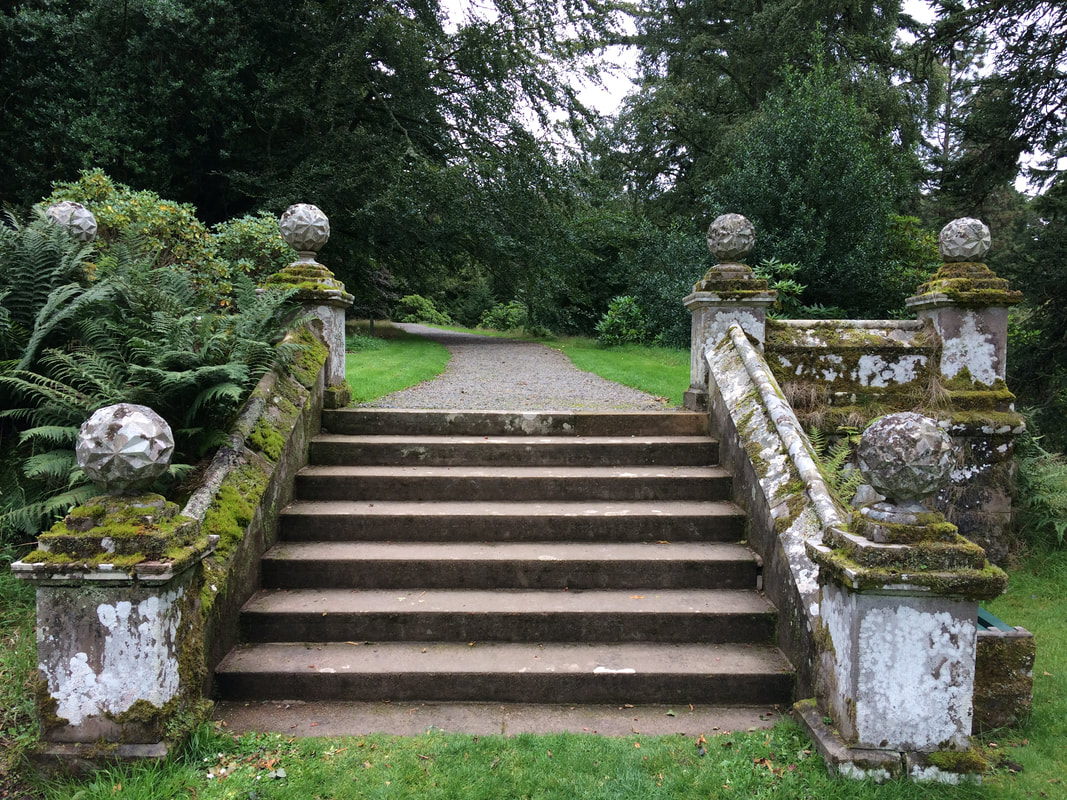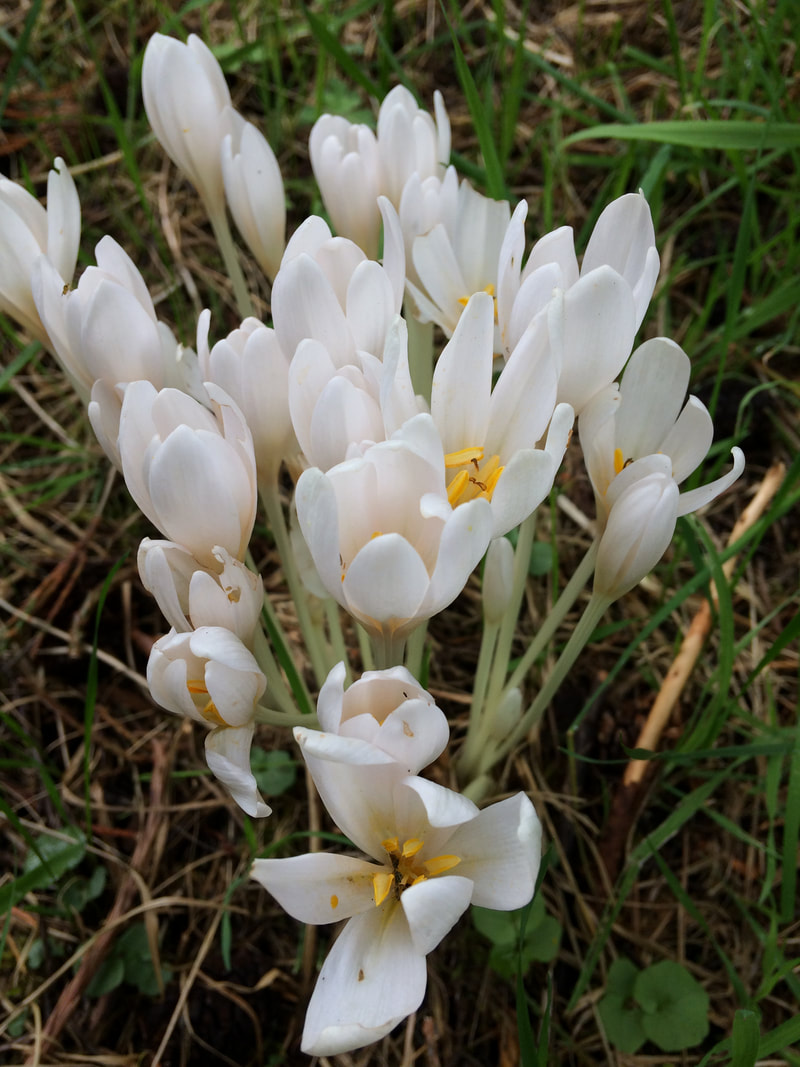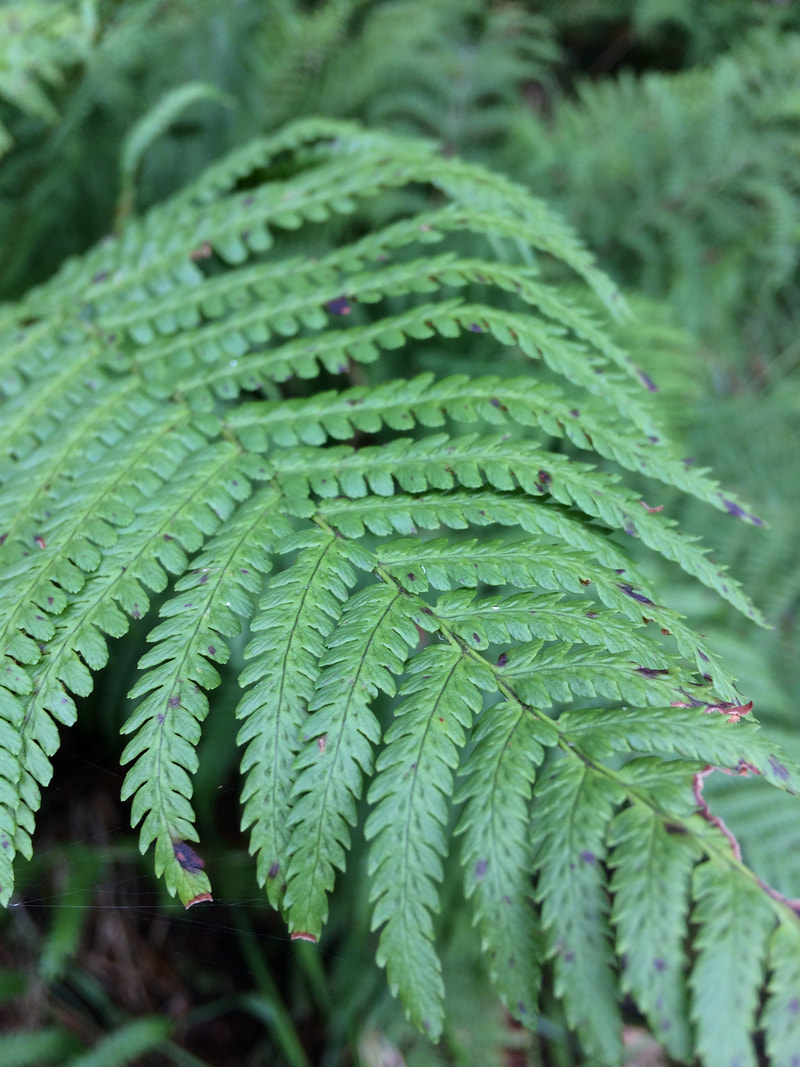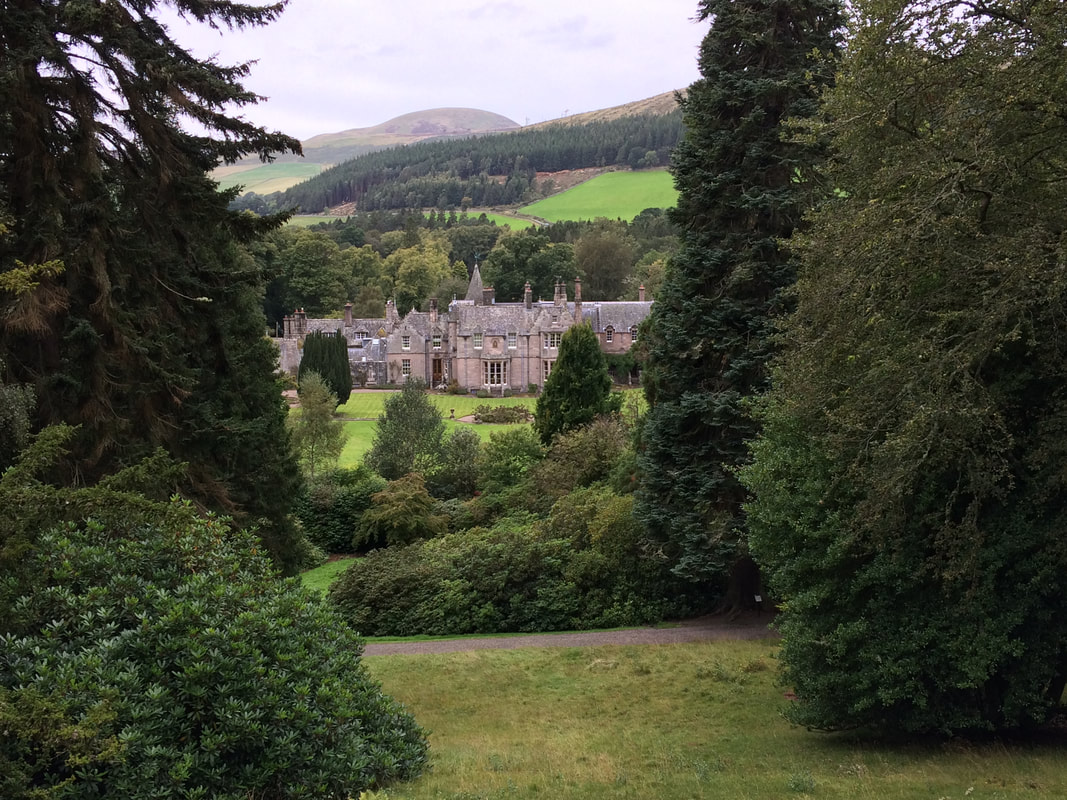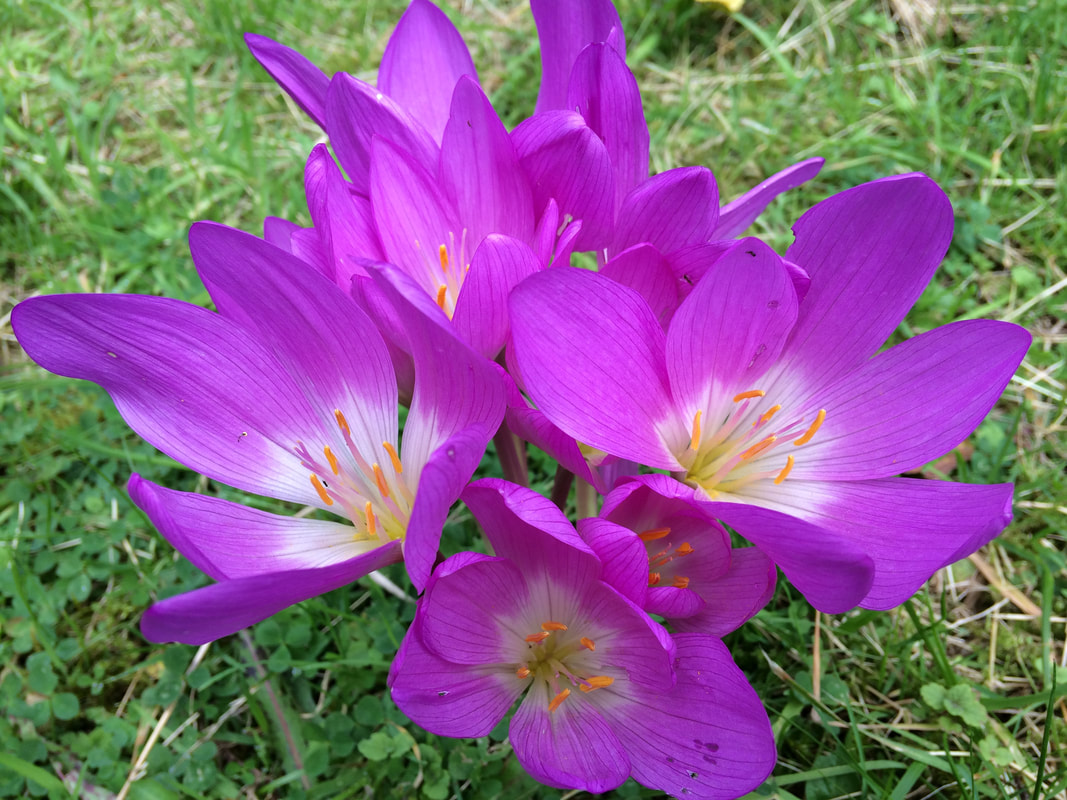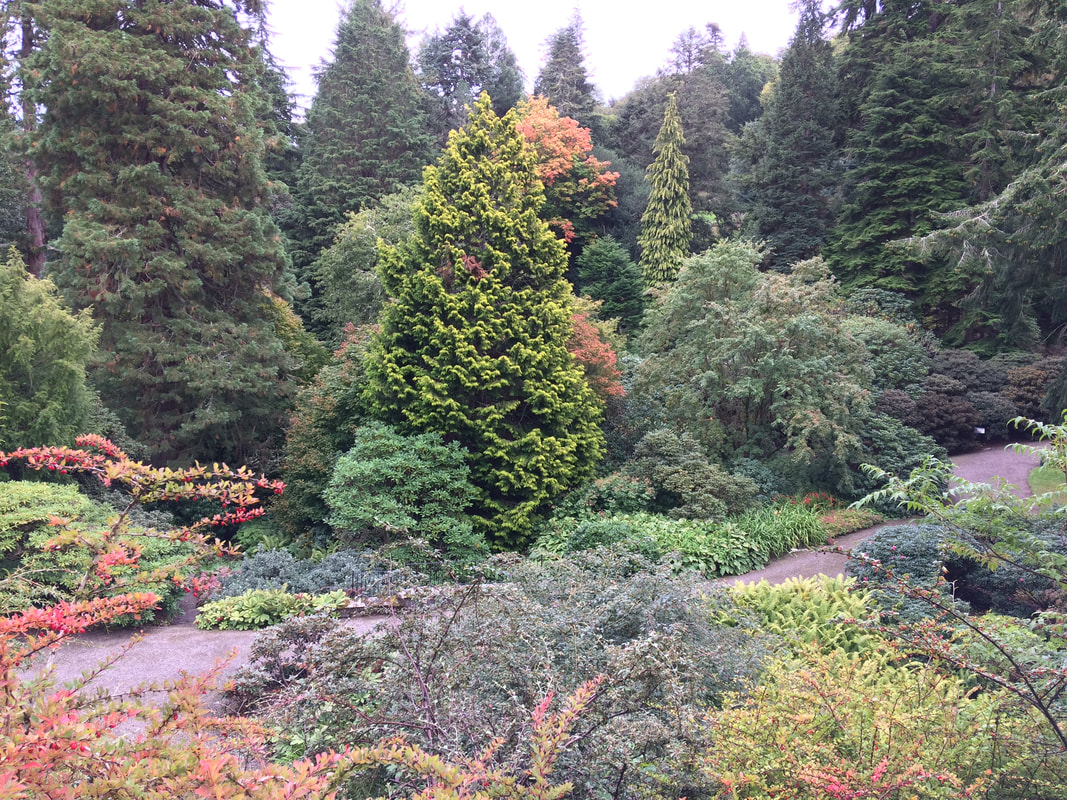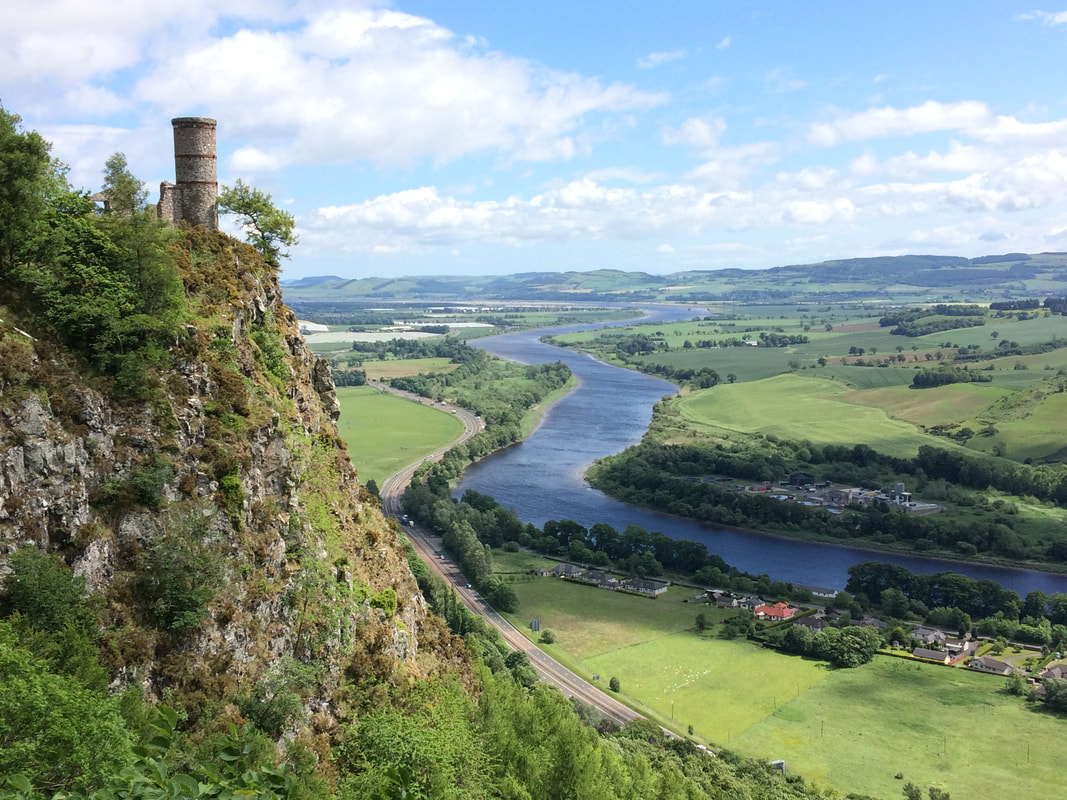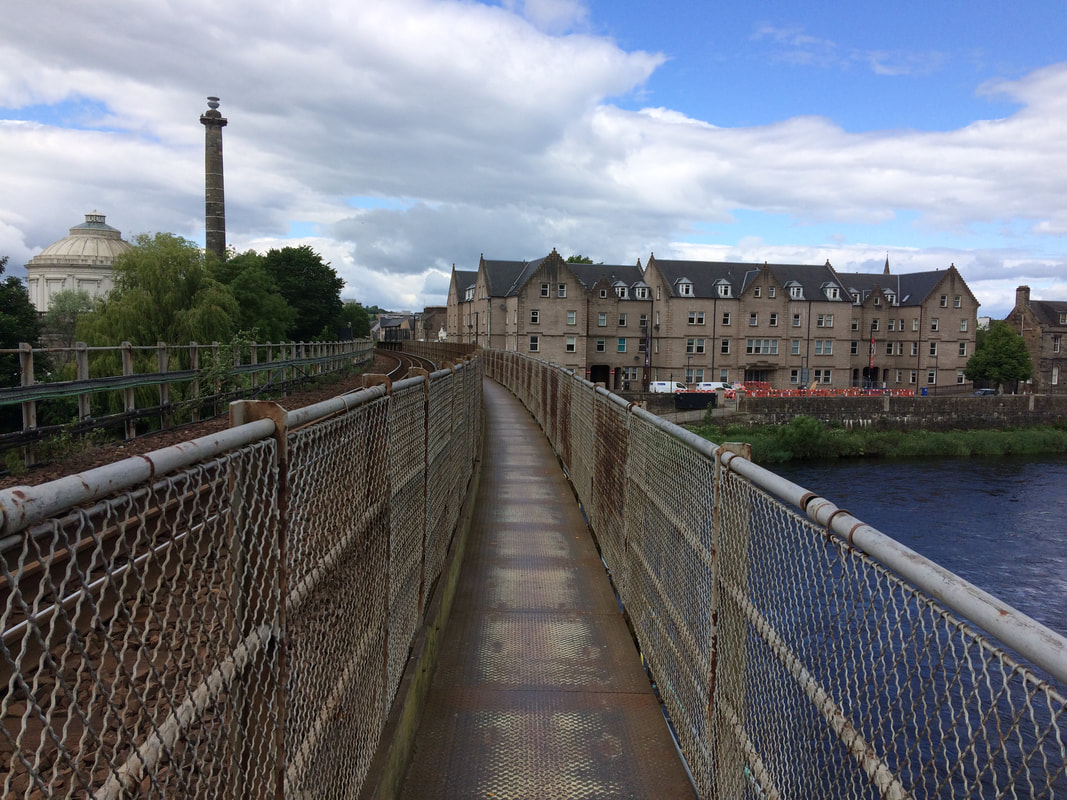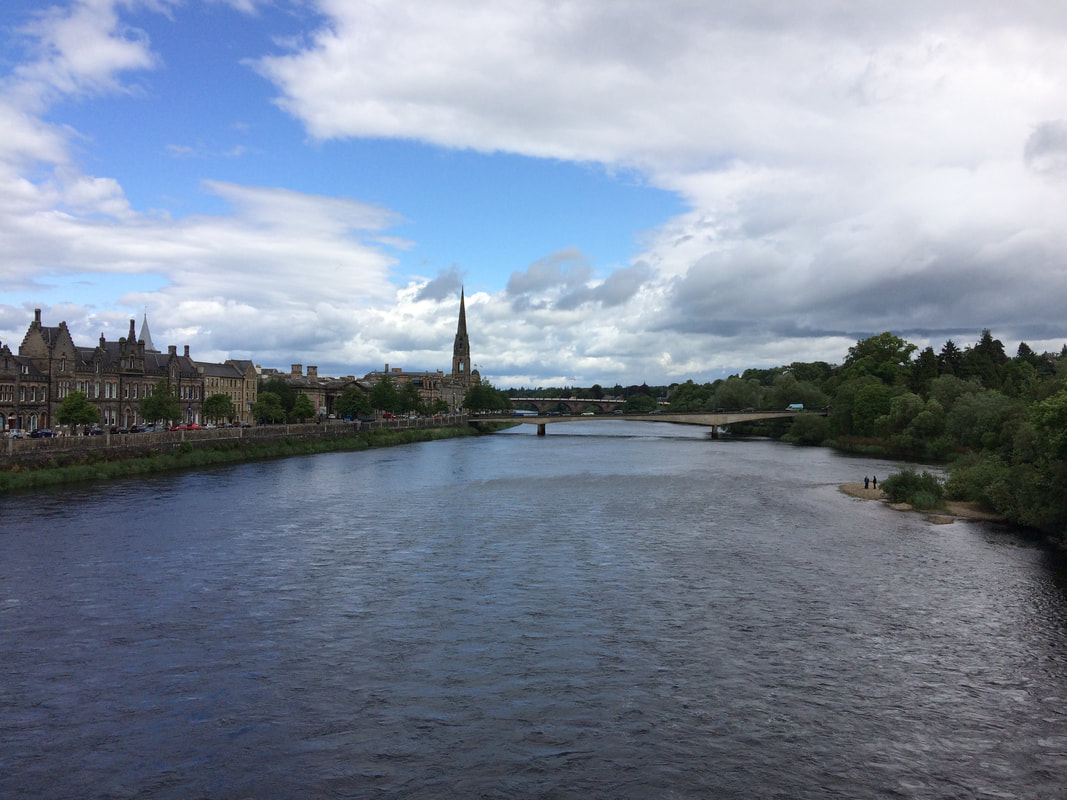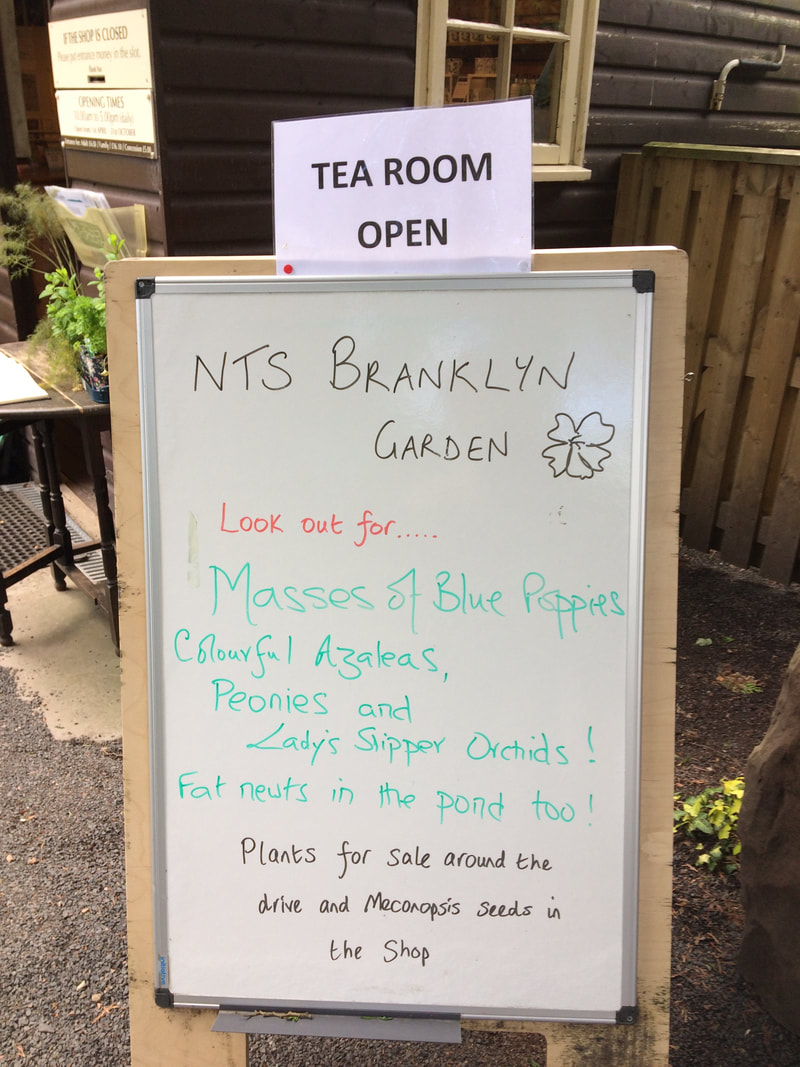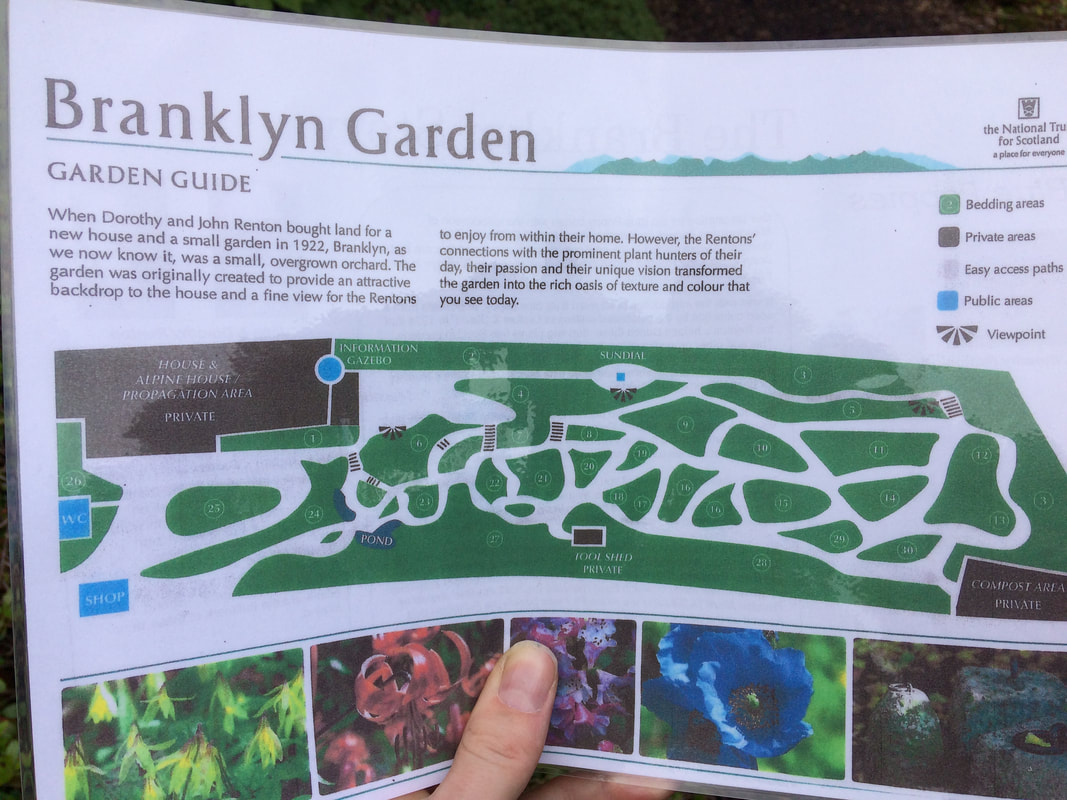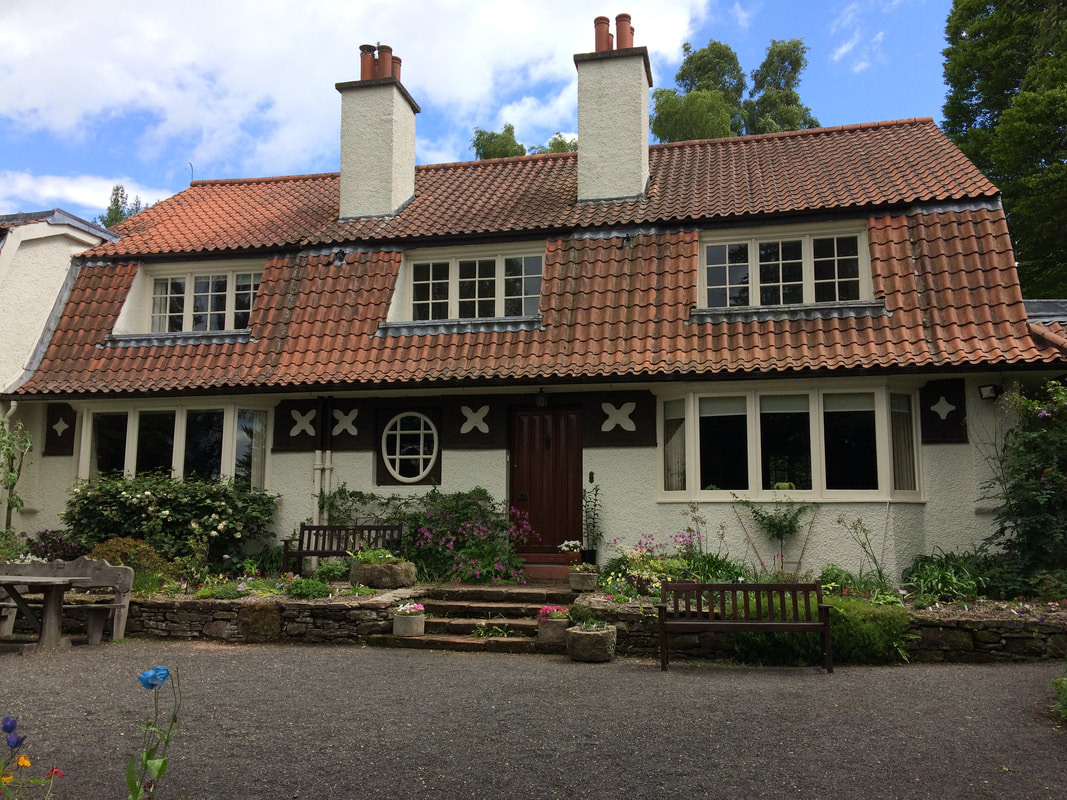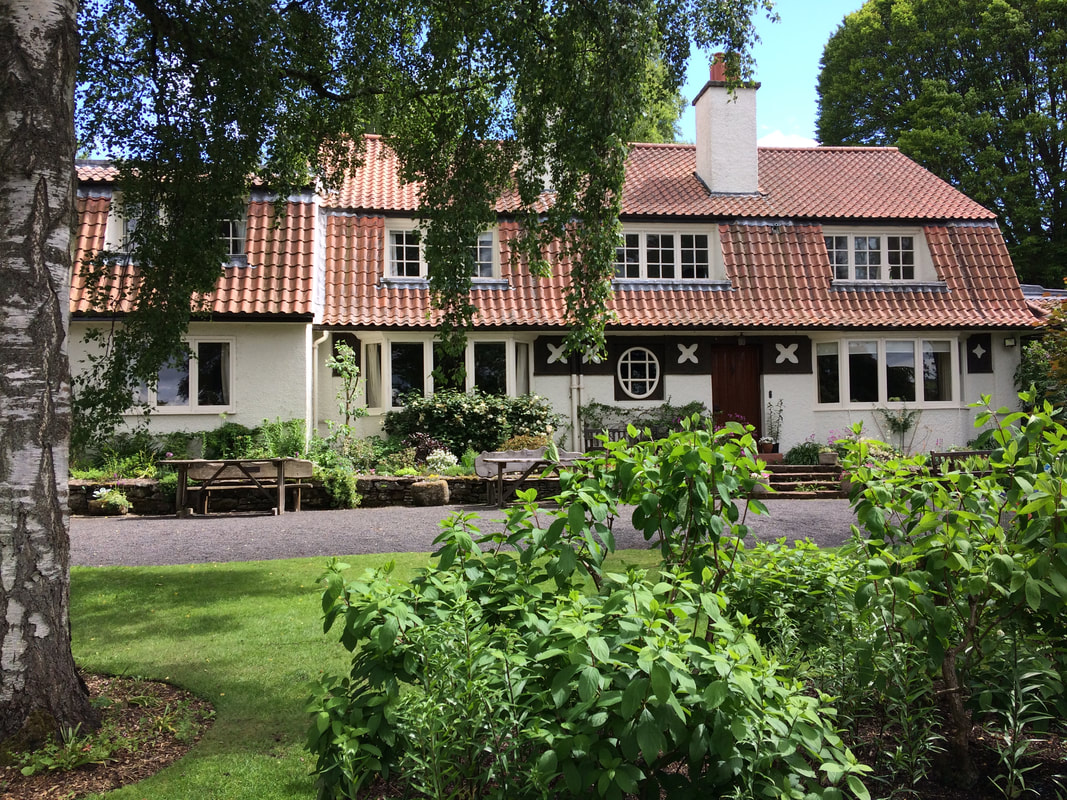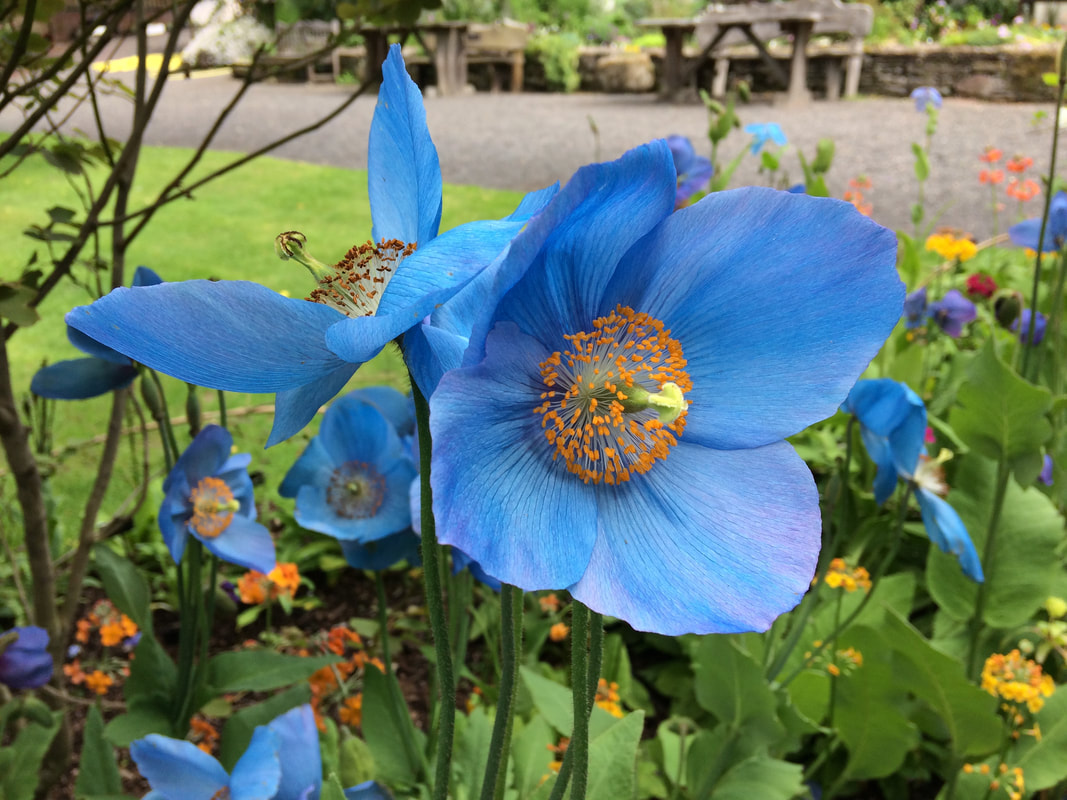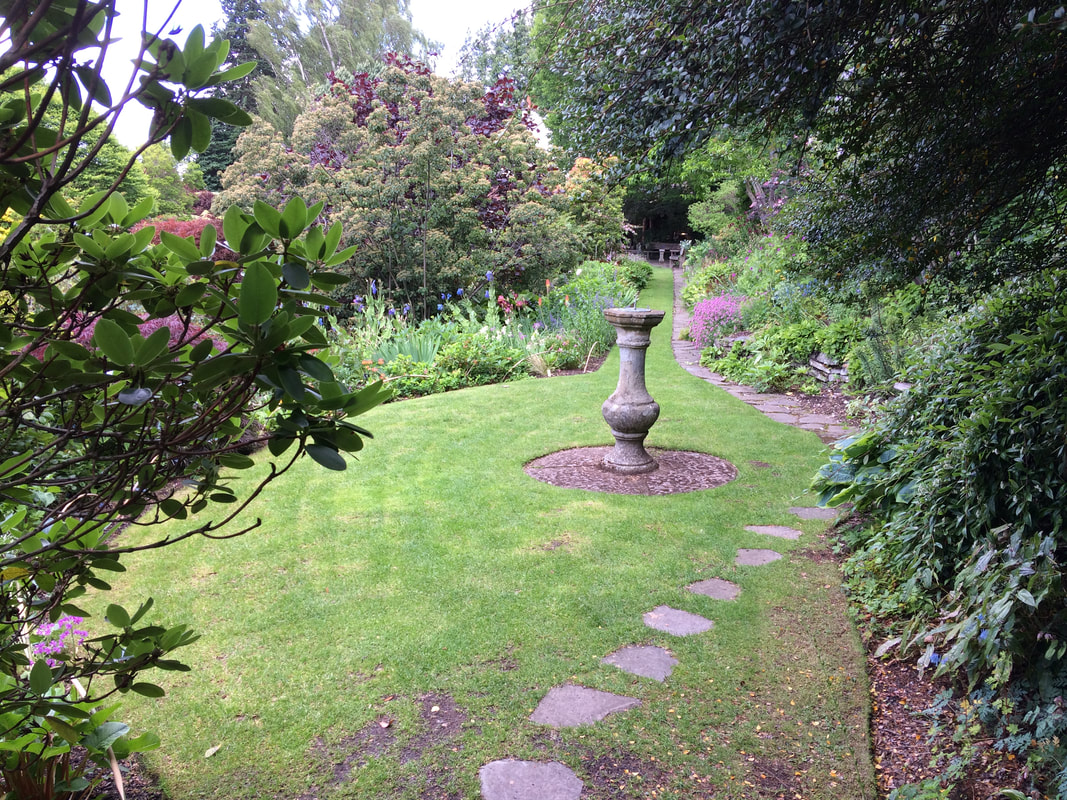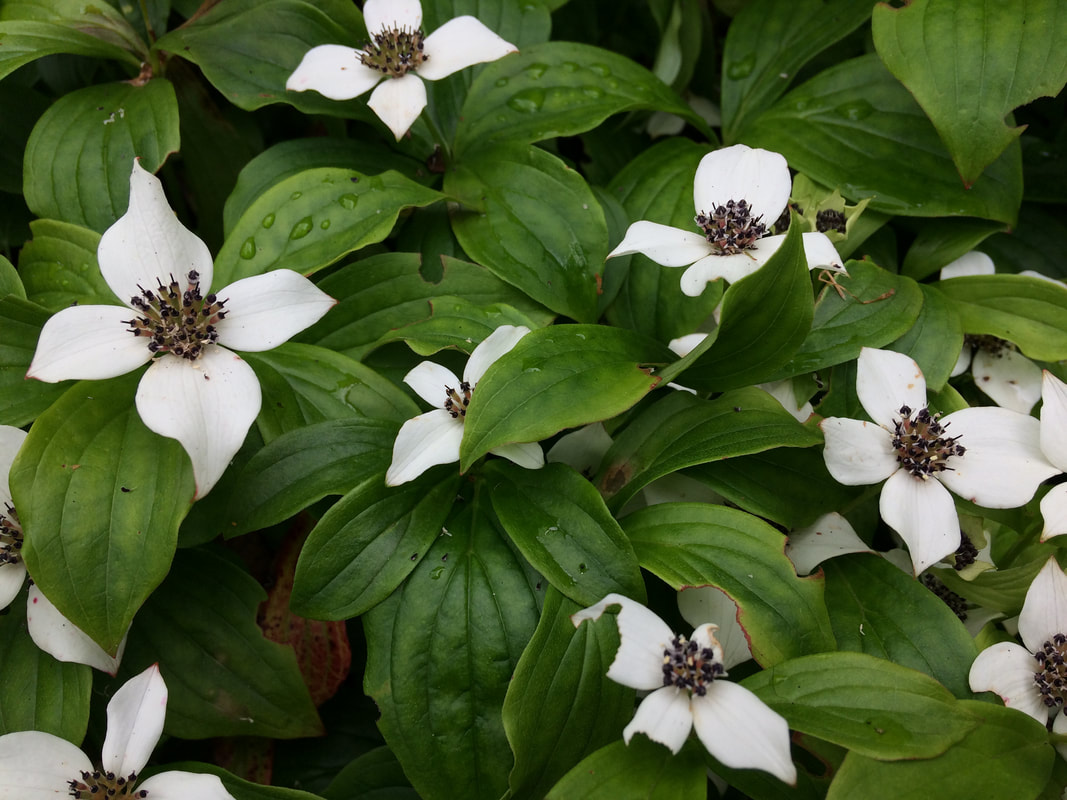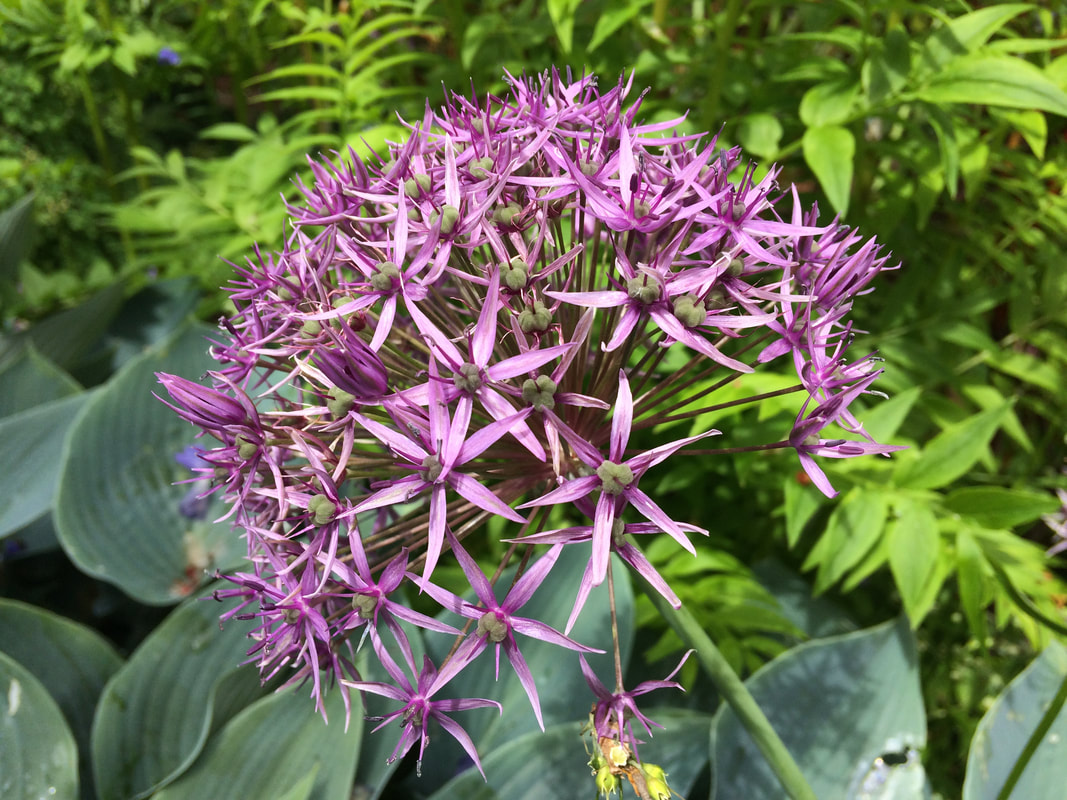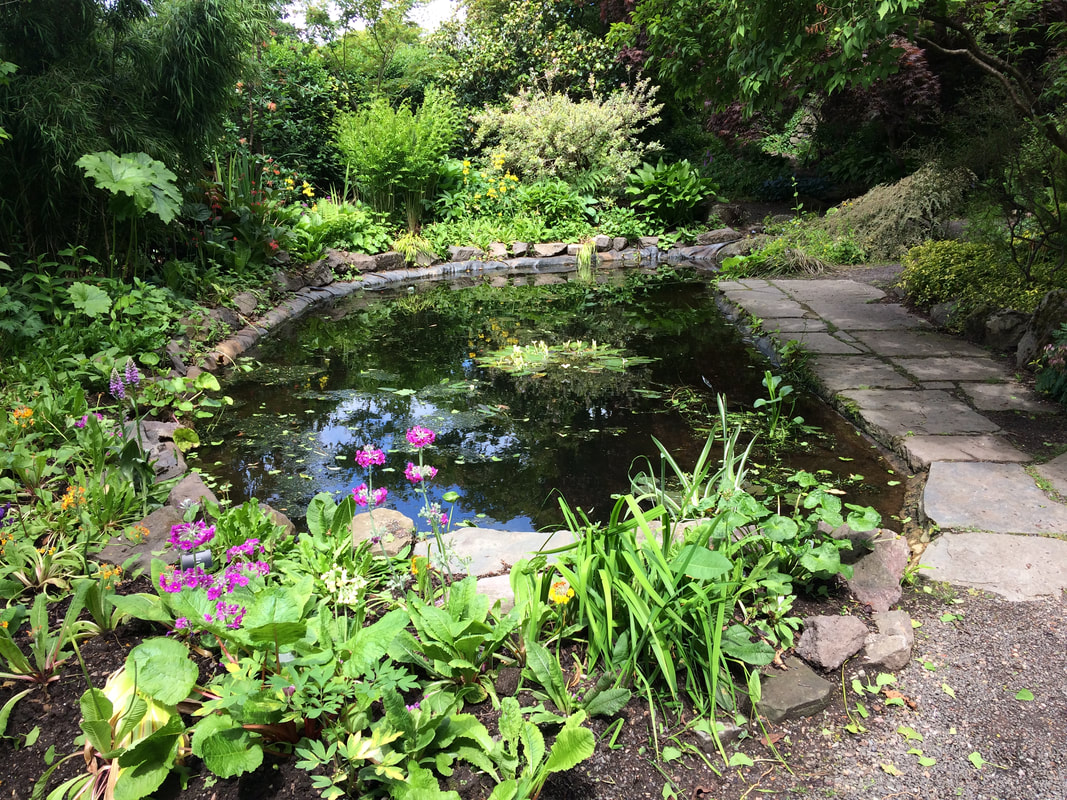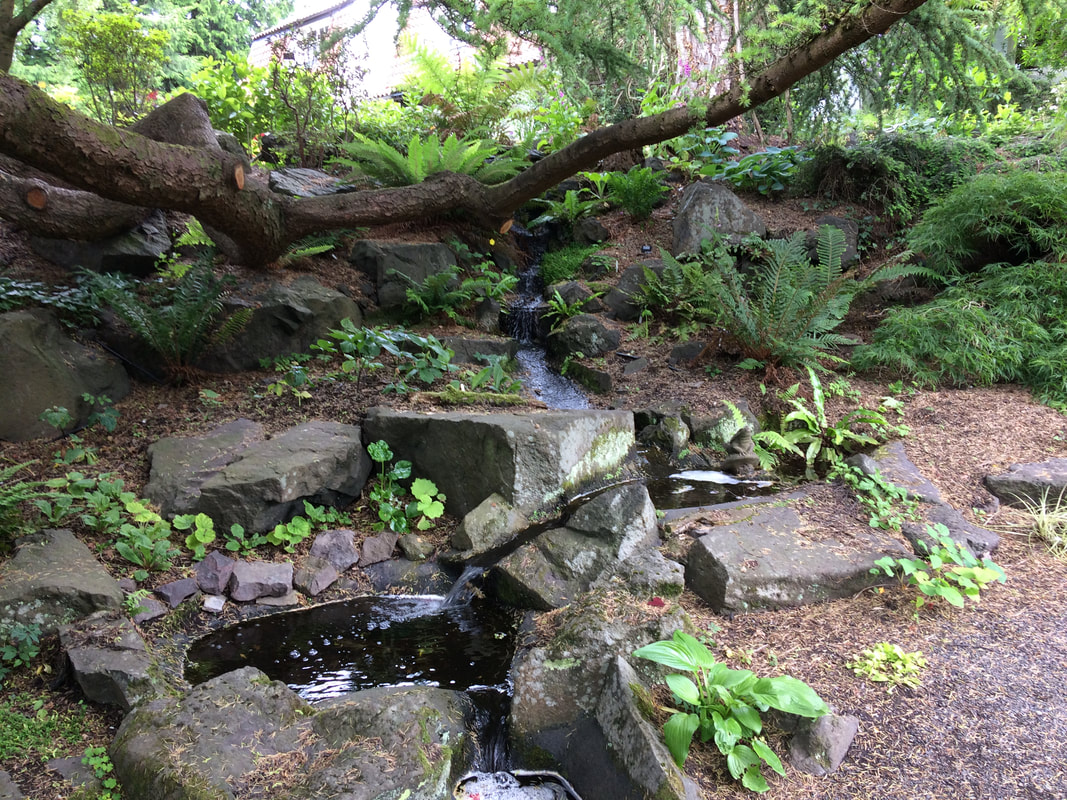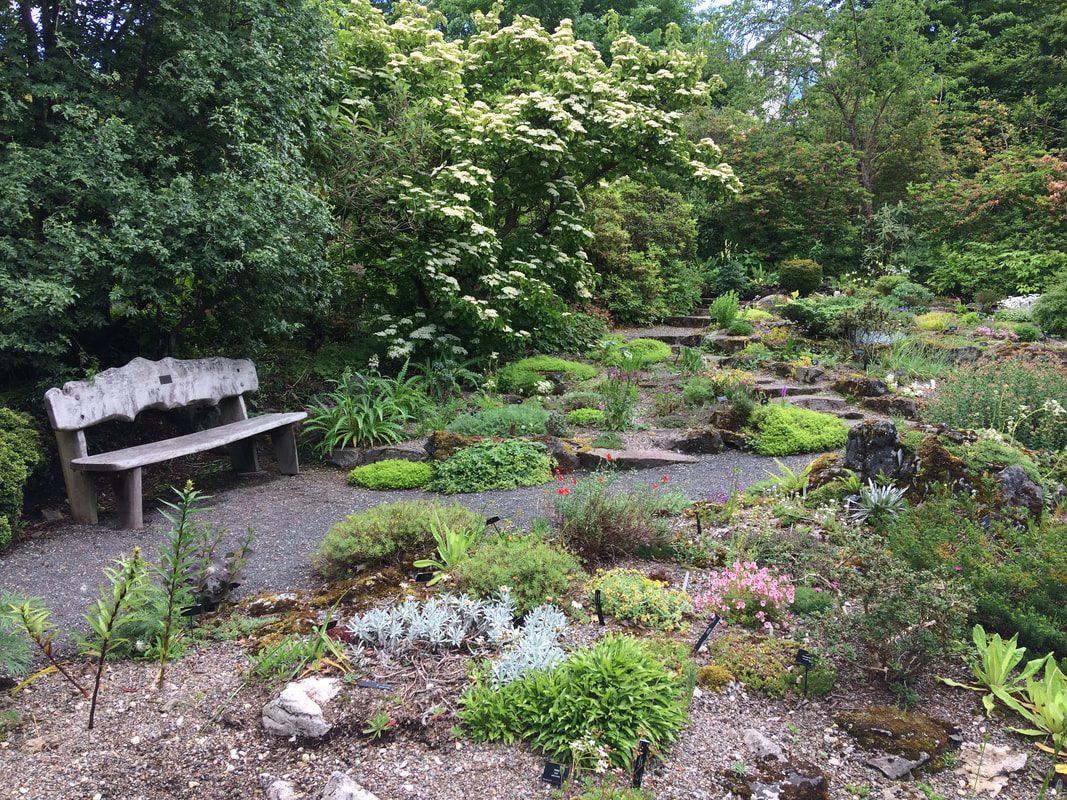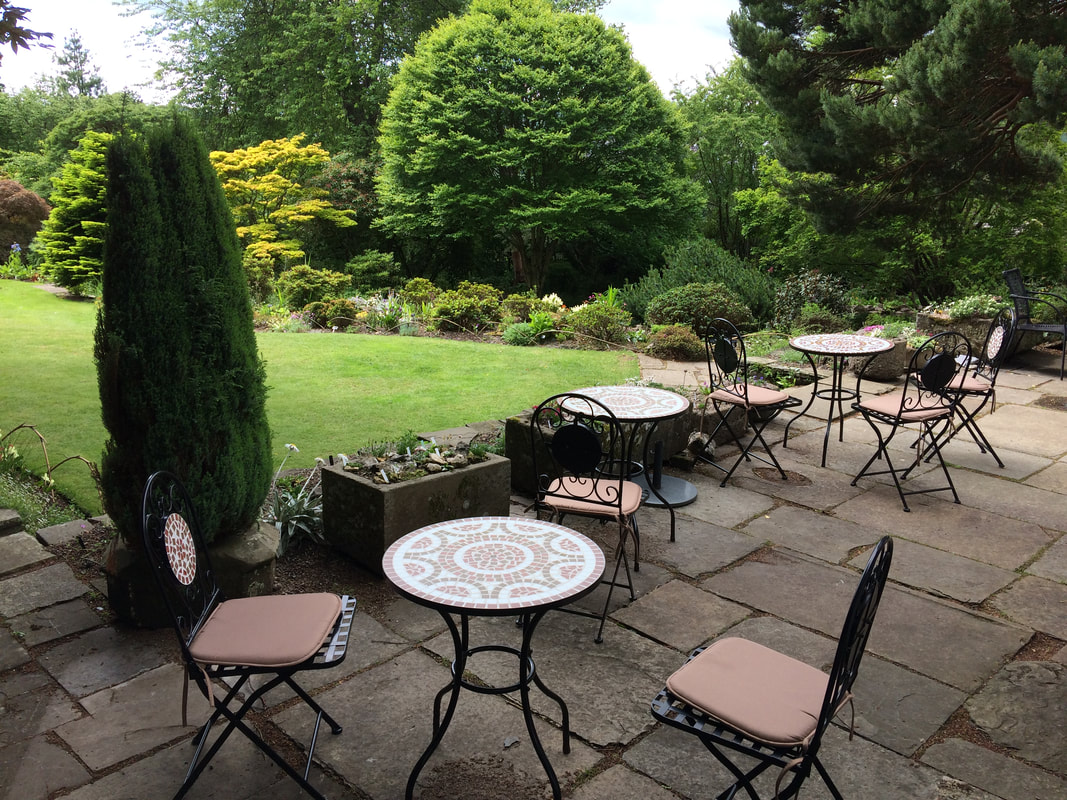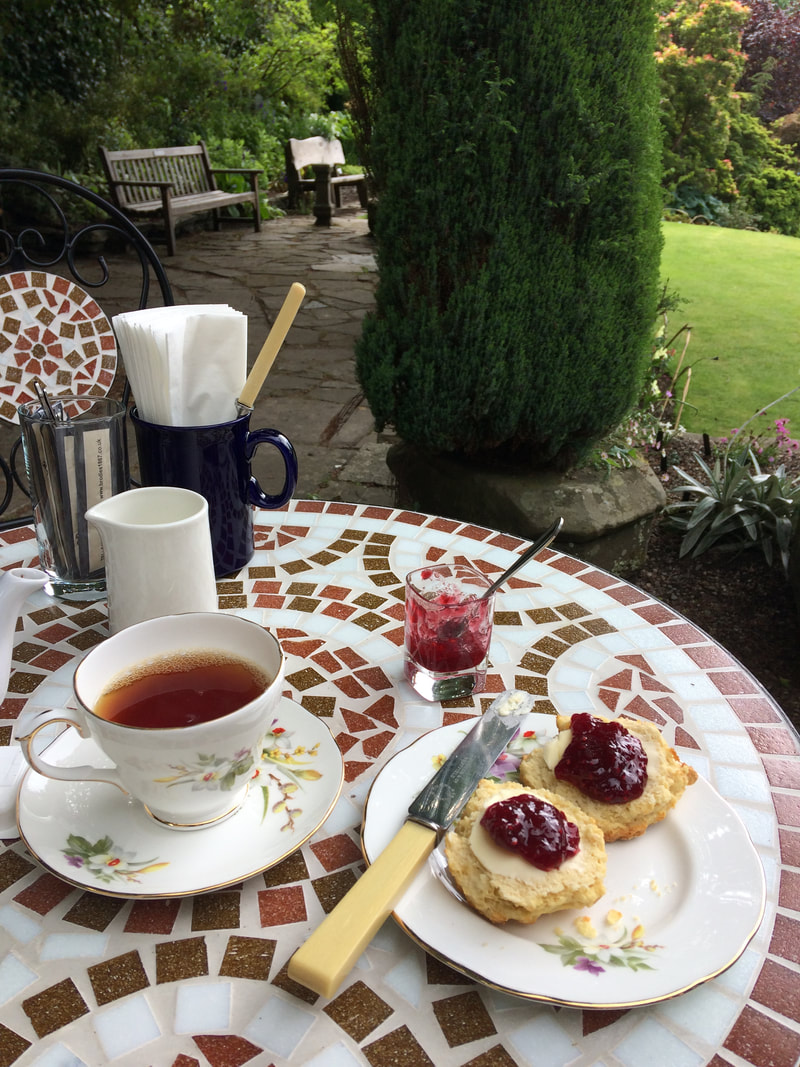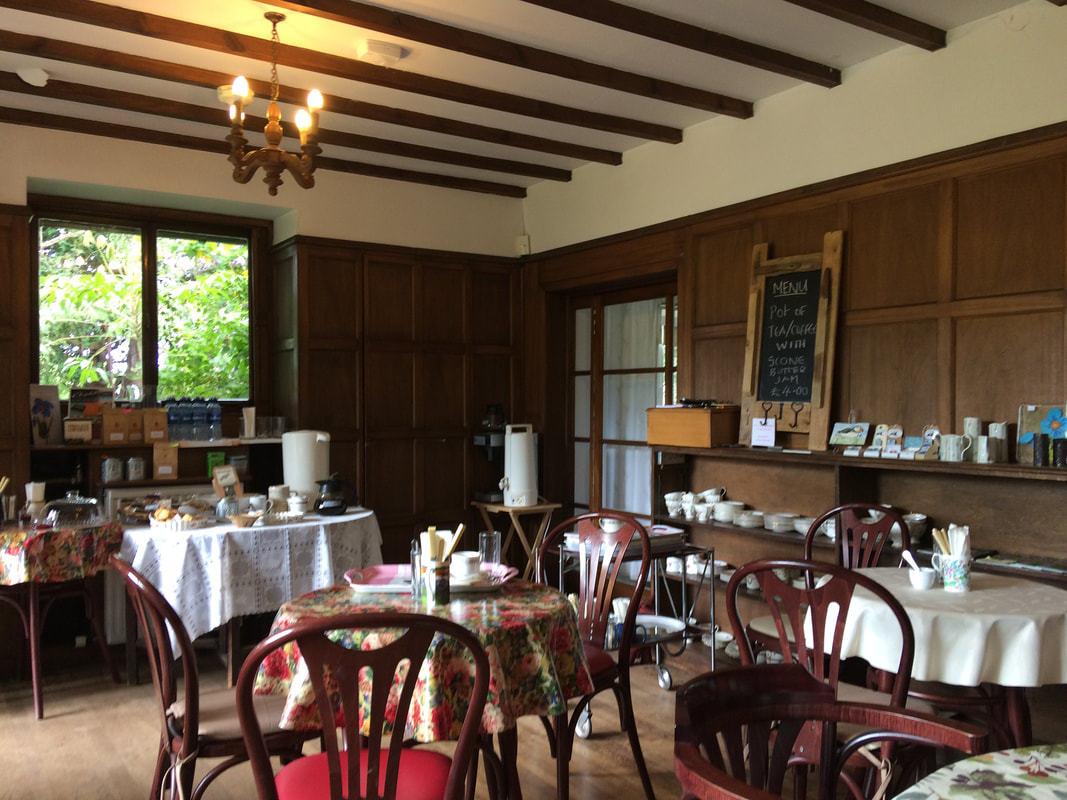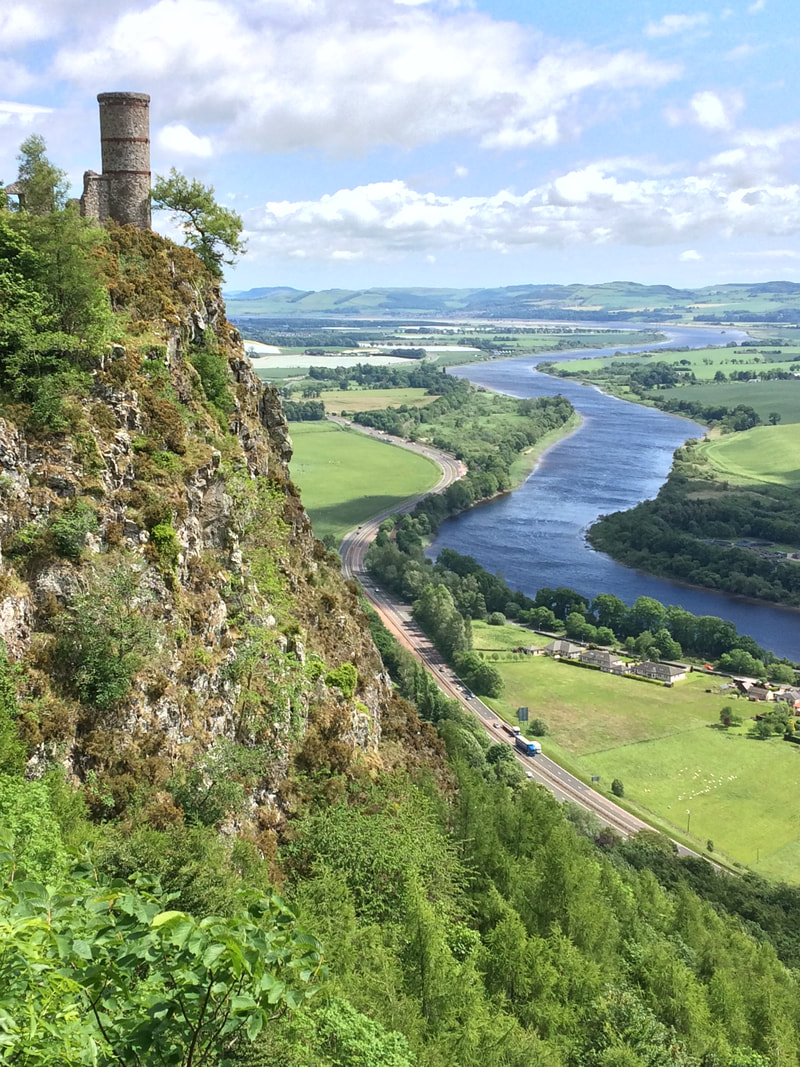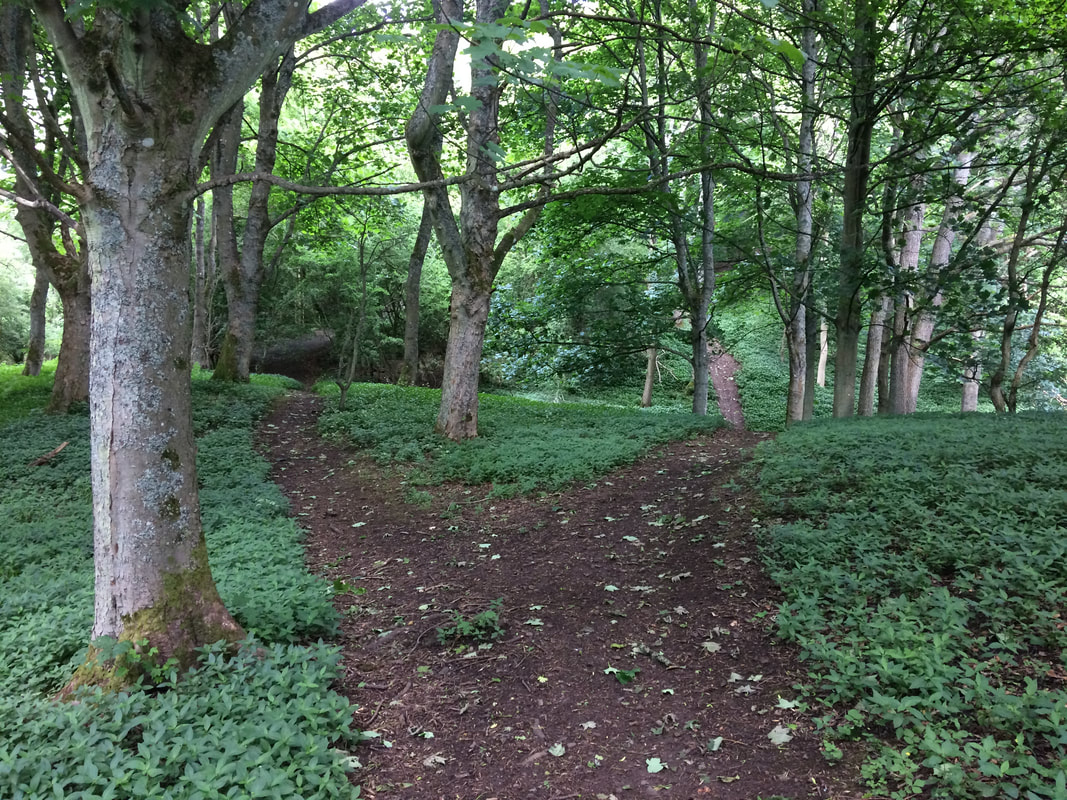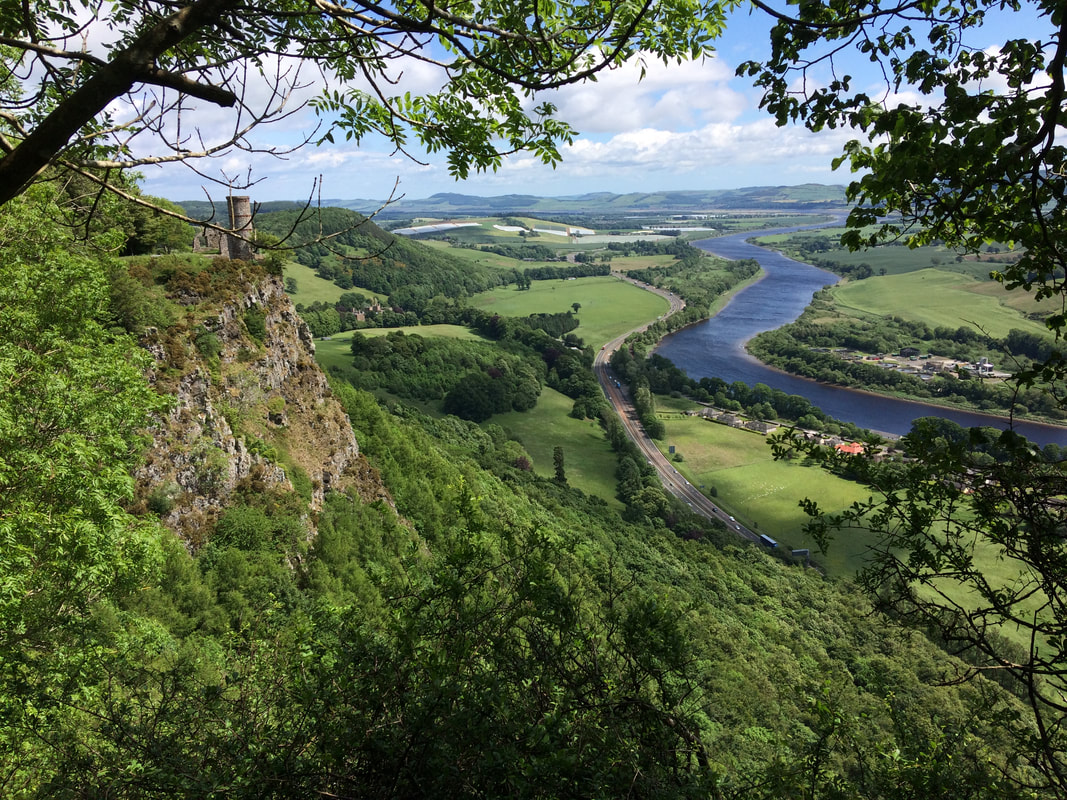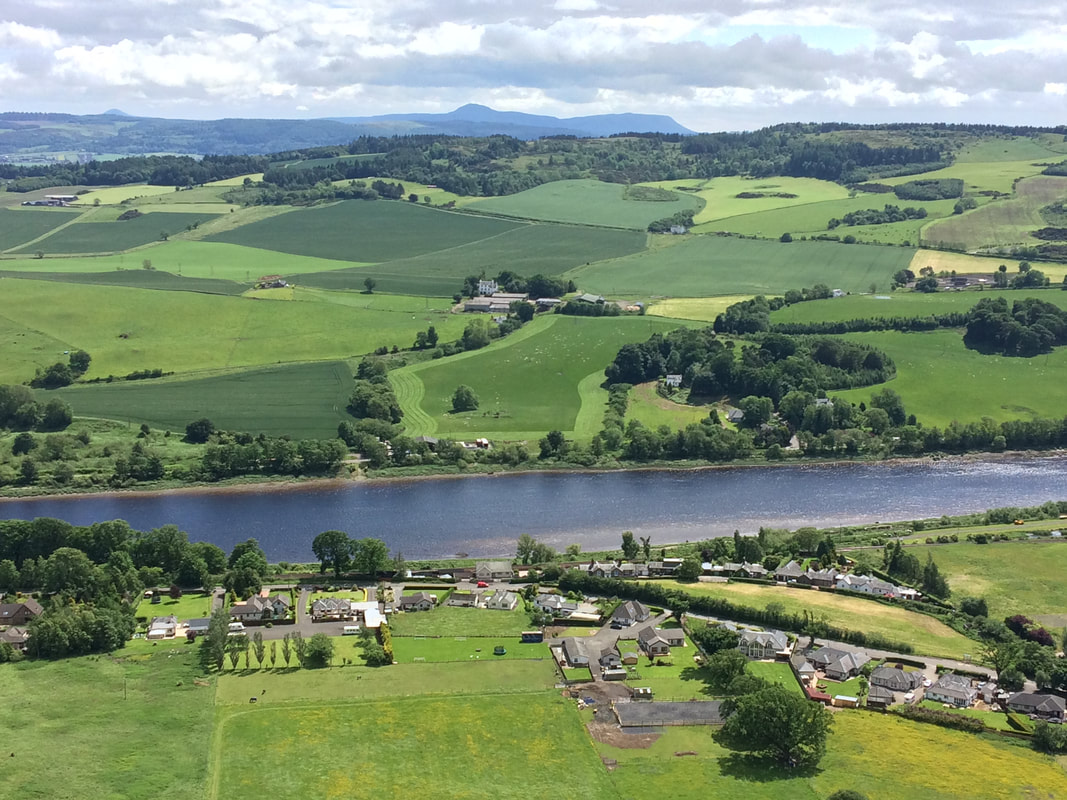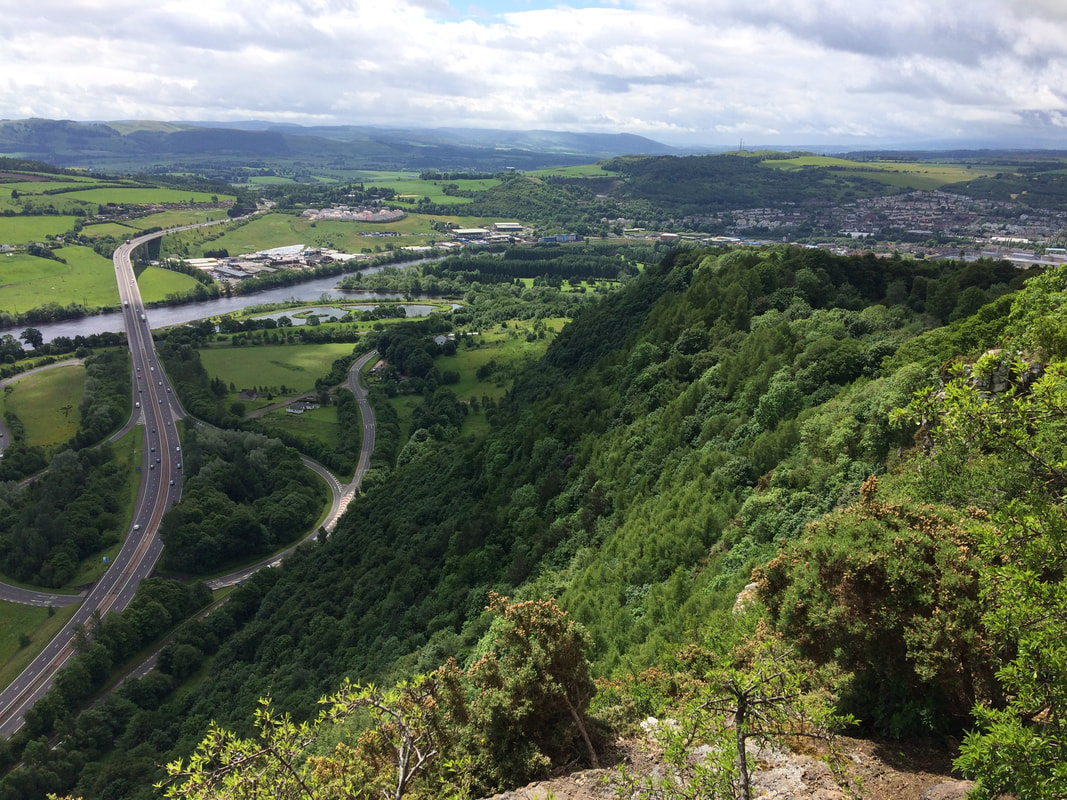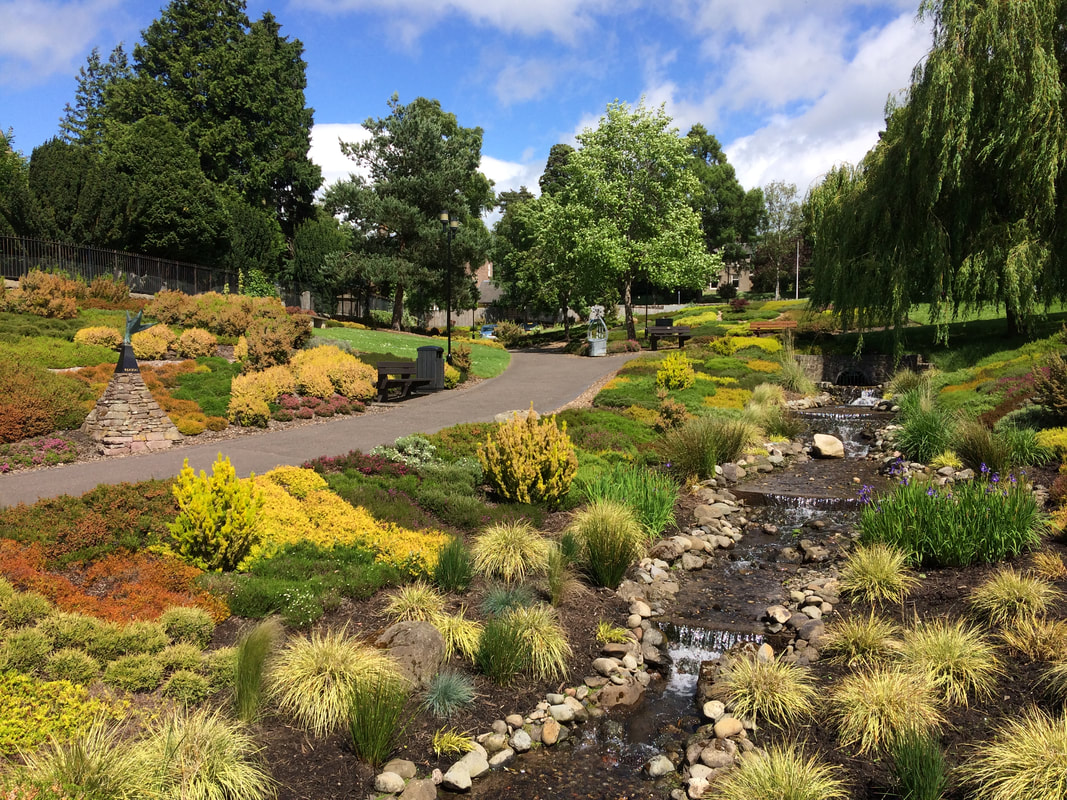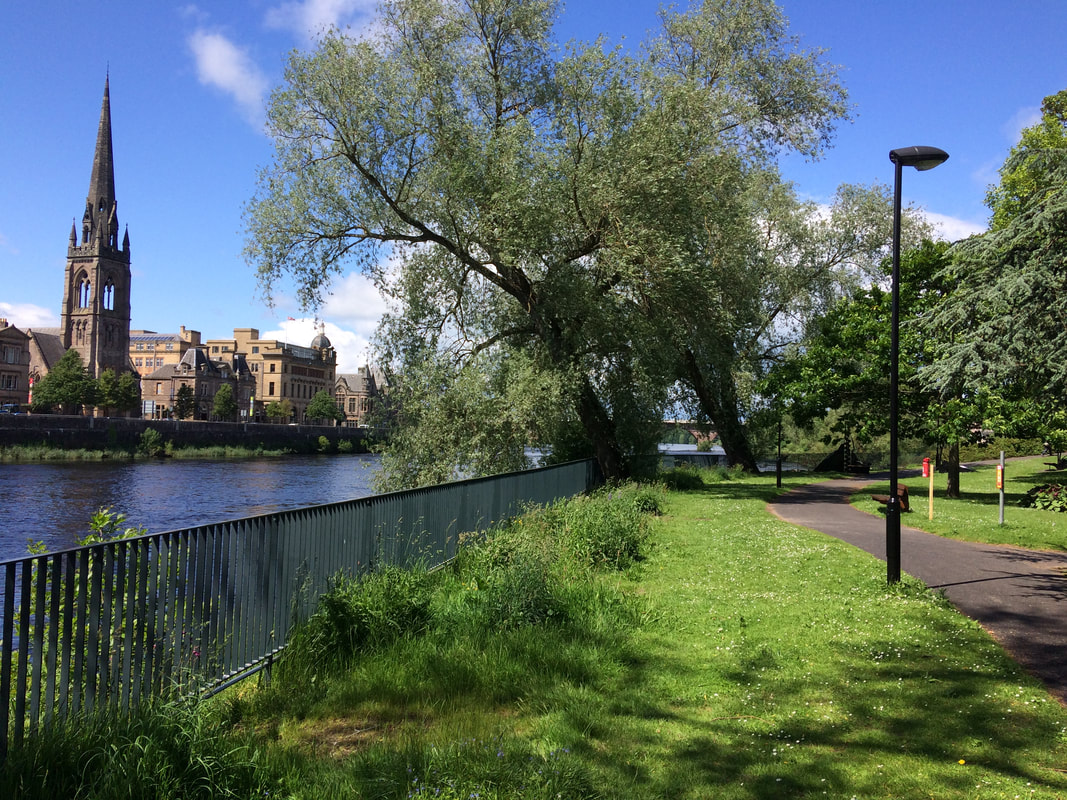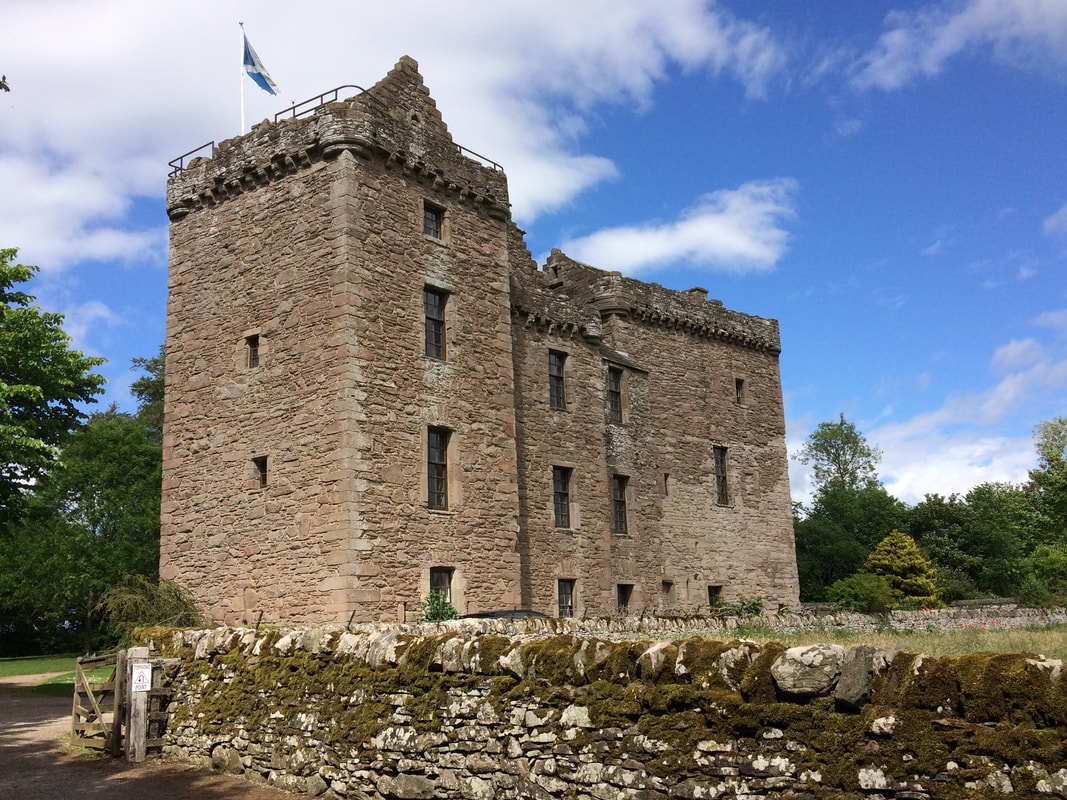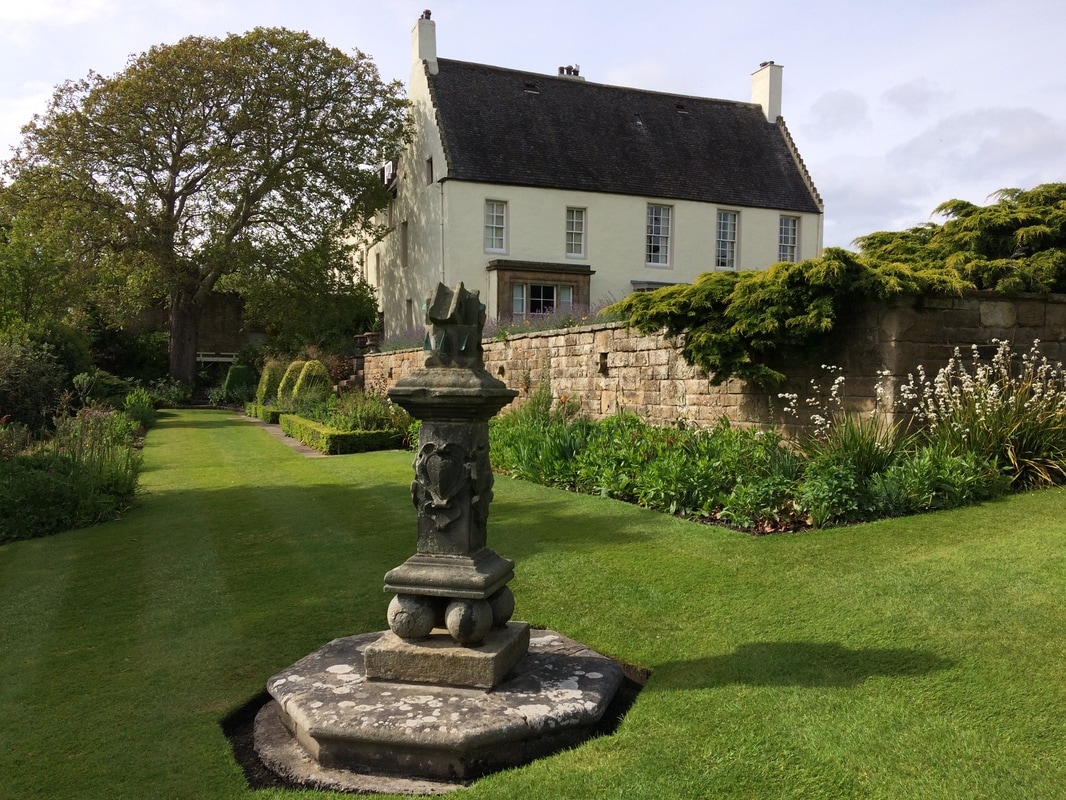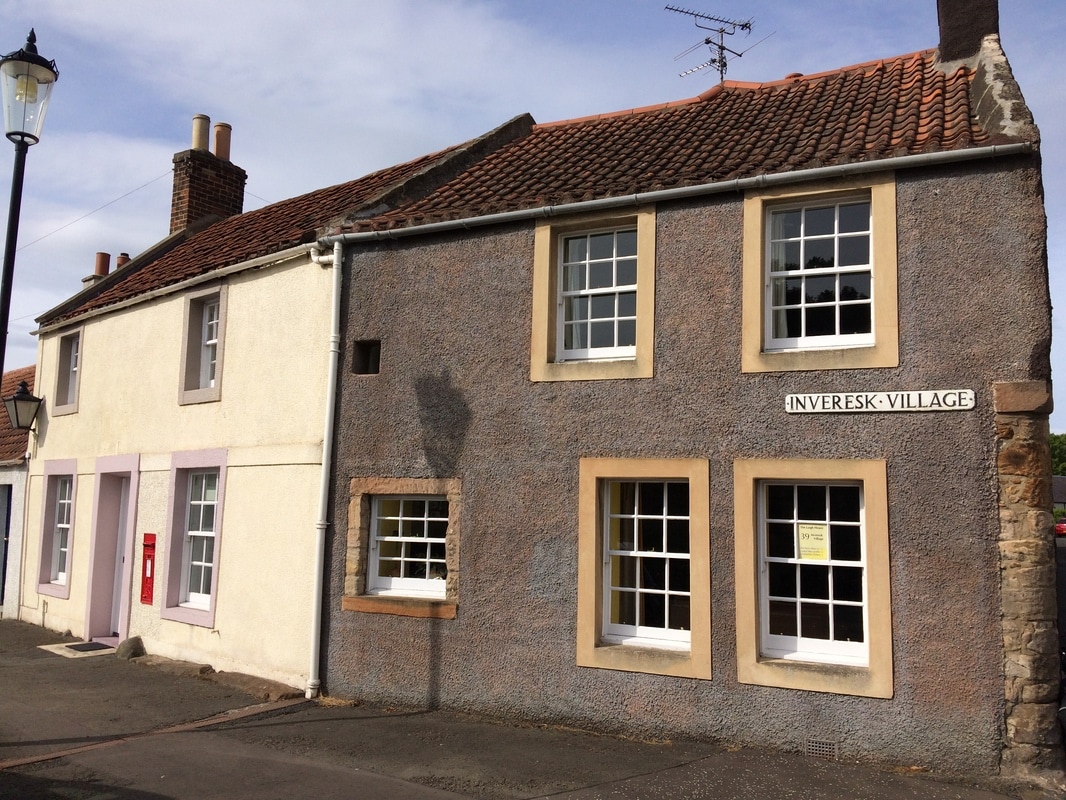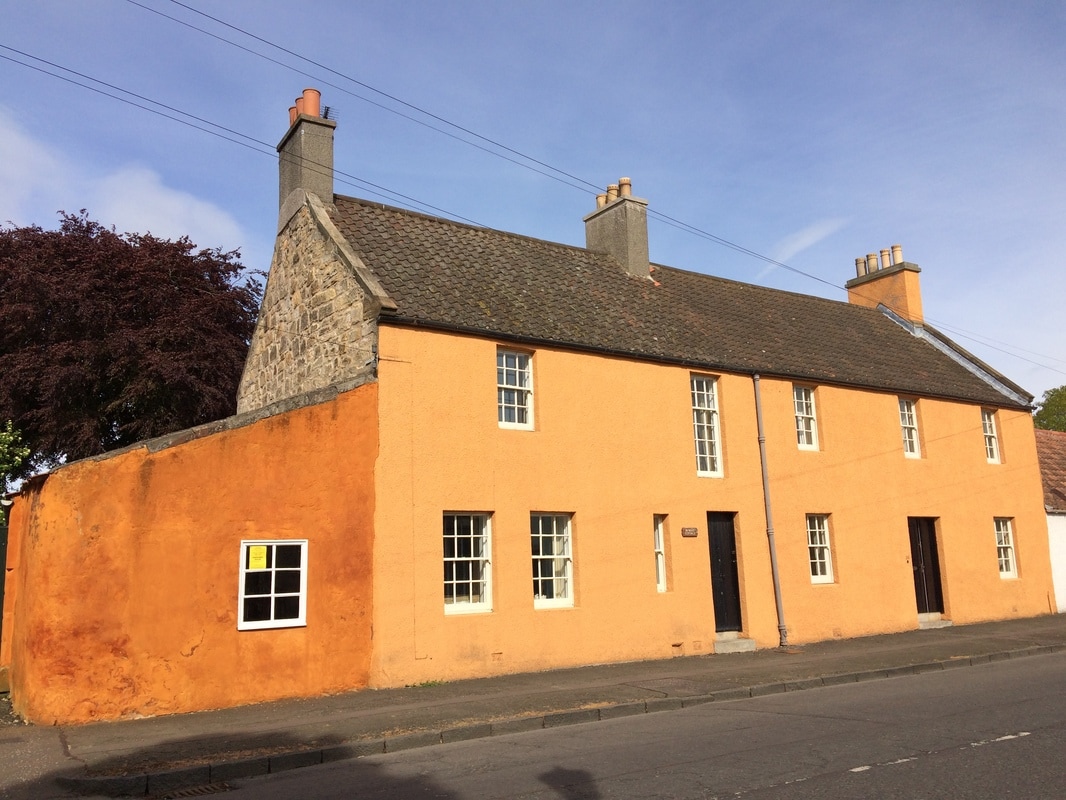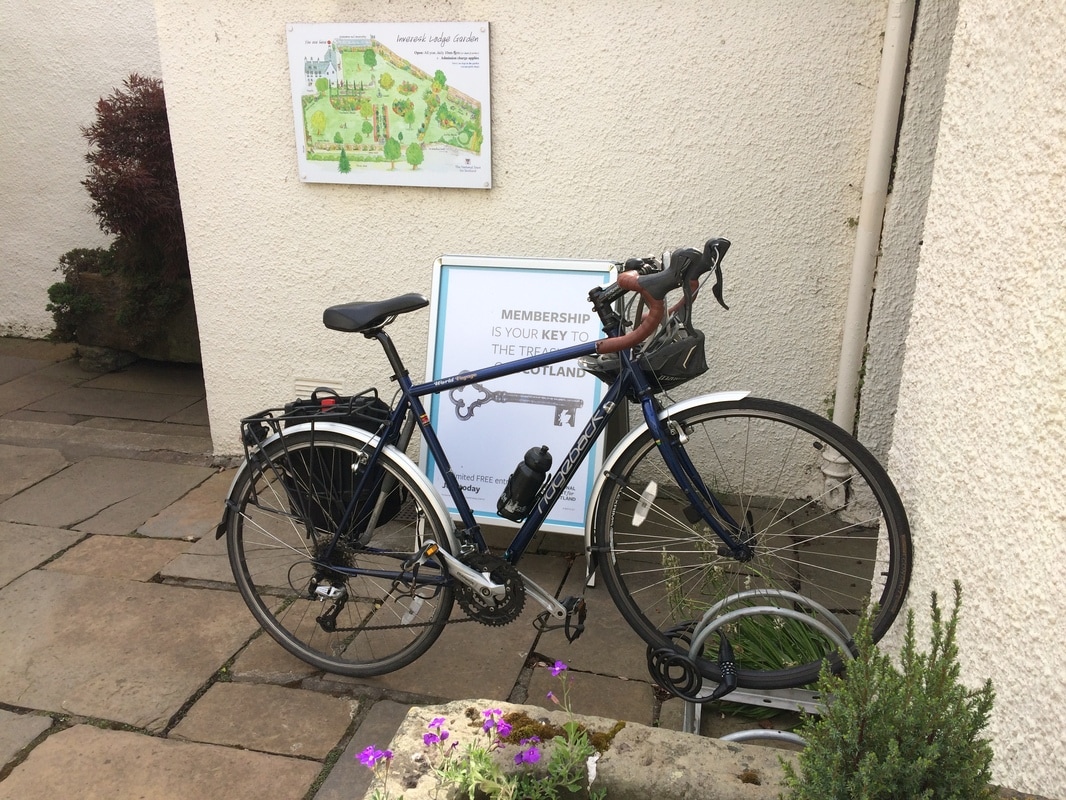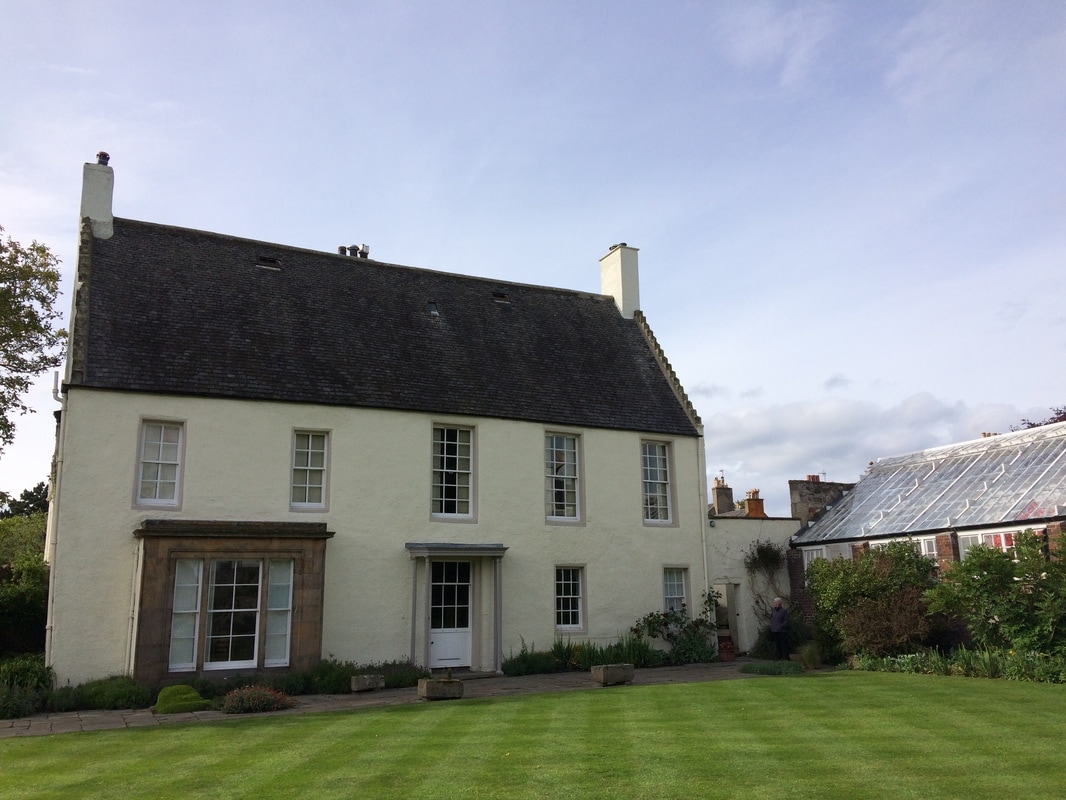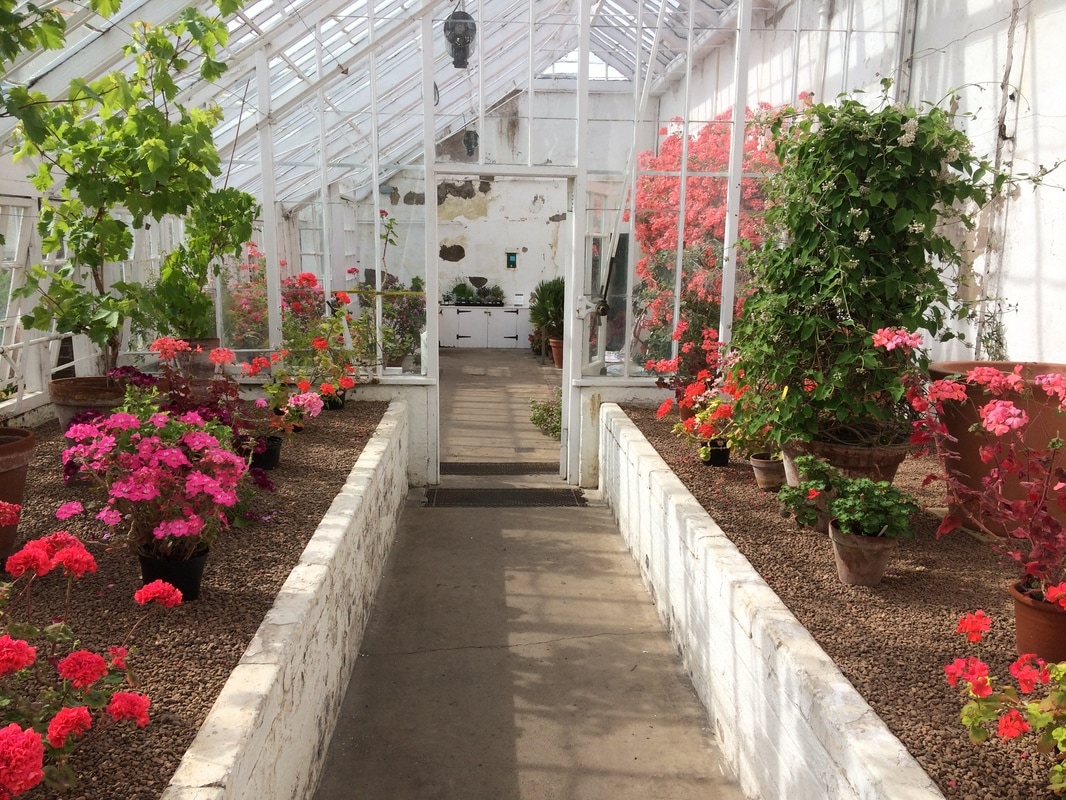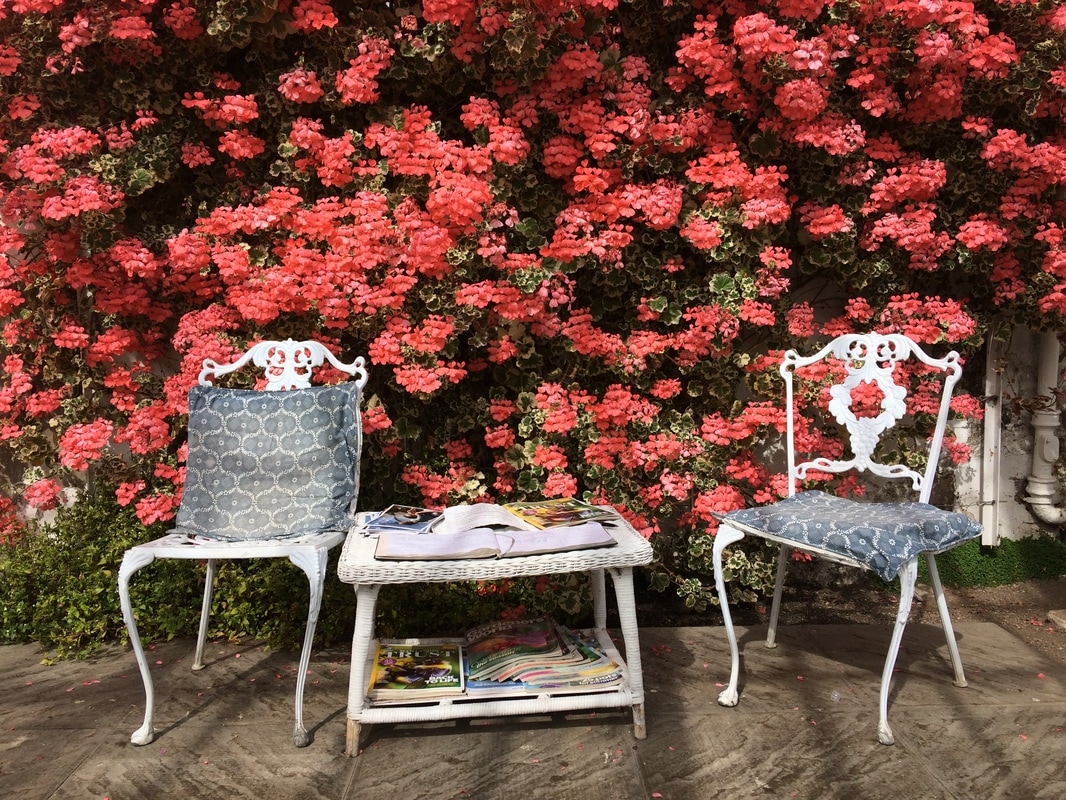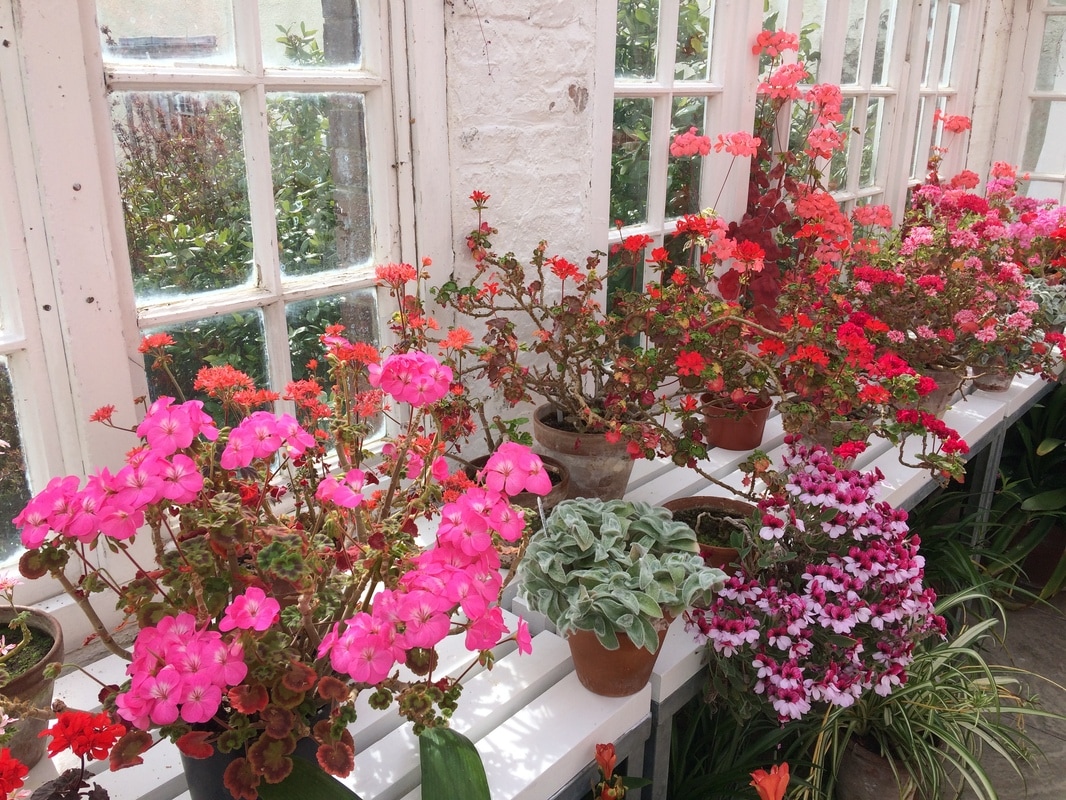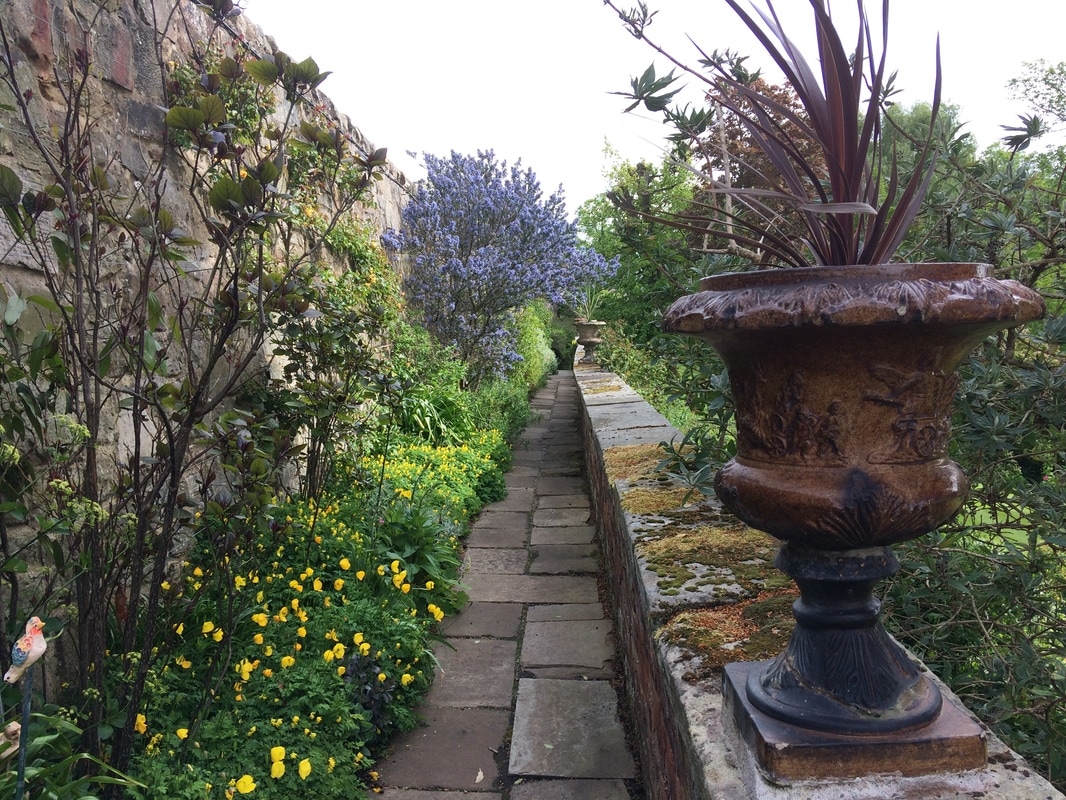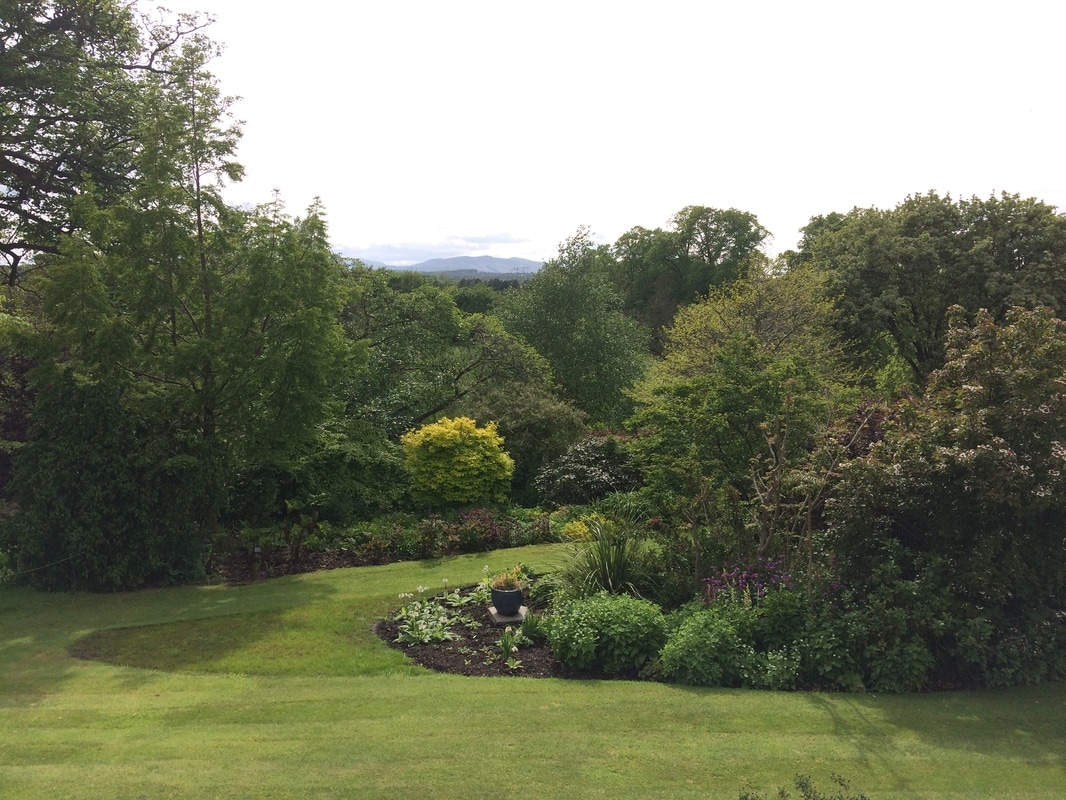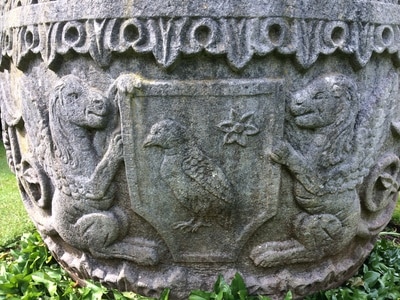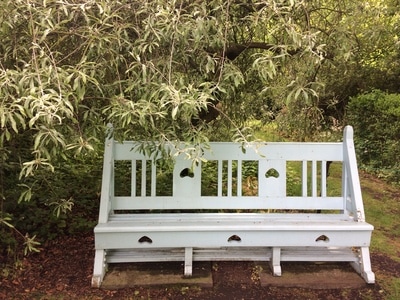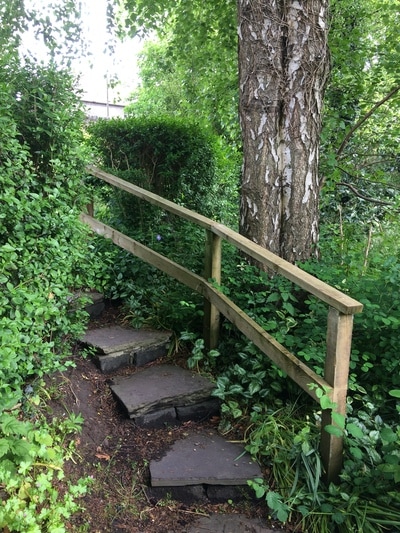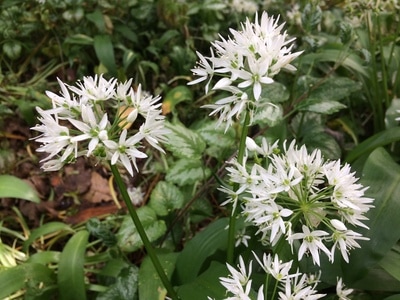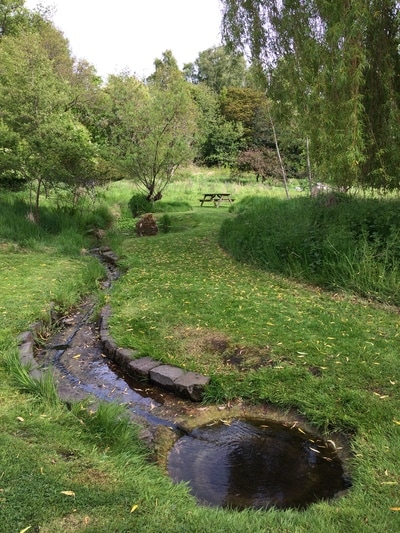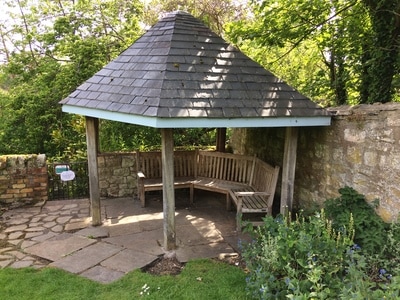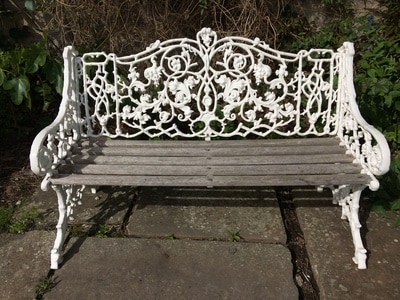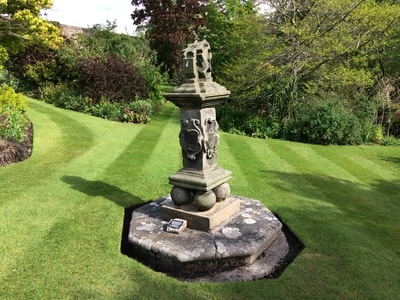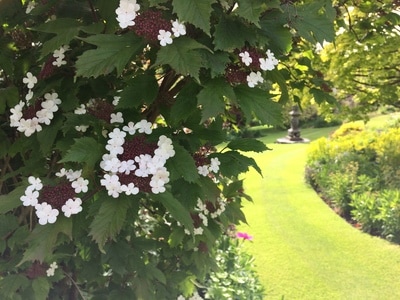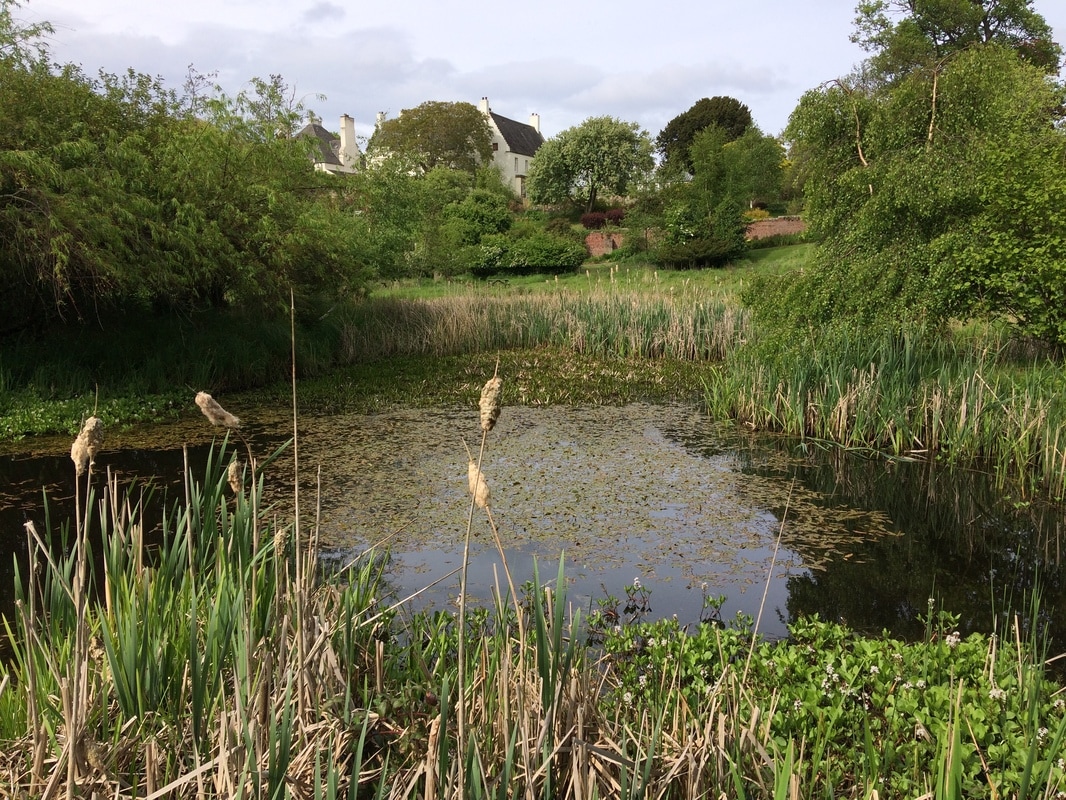|
Containing some of the oldest and tallest trees in Britain, Dawyck Botanic Garden is a peaceful place of woodland walks, waterfalls and wonderment. Here you will find the mighty Douglas fir, grown from seeds collected by David Douglas, the Scottish botanist who gave the tree its name. The gardens are 8 miles from Pebbles in the Scottish Borders.
Getting there One way of reaching Dawyck is from Biggar: 1. Take a train to Addiewell and then cycle 20 miles to Biggar. My Cycling to Biggar blog has full details of the route. 2. Take the 5 mile disused railway path from Biggar to Broughton. My blog has full details of this route. 3. Cycle the final 5 miles from Broughton to Dawyck along quiet country roads with breathtaking scenery, which I will describe below: Dream road This happens quite a lot when exploring Scotland by bike. I find a new road that takes my breath away and I have to put it on the list of my most favourite ever. This short stretch between Broughton and Dawyck is on that list. My dreams about cycling in Scotland will feature this road. It is a perfect combination of quiet roads and outstanding scenery.
The B712 is the most obvious and direct road to take between Broughton and Dawyck, but to experience the incredible scenery of this area take the single-track roads to the north of the B712. It's a non-stop rolling panorama of a valley of hills with the mighty River Tweed flowing through it.
I could cycle this road all day long. Every single second my eyes were being treated to the most lovely vistas. It was Scotland at its very best. Come here and cycle this road or, at least, travel it on Google Maps and you will be smiling.
Grand fir
Dawyck is nestled within this glorious valley. It is a regional garden of the Royal Botanic Garden Edinburgh and the focus is trees, in particular the Douglas fir. It is also home to the world's first reserve for mosses and lichens. Azaleas, rhododendrons, snowdrops, bluebells and blue poppies can also be seen here. It is the extensive network of paths, through woods and alongside a burn with little waterfalls and bridges that makes Dawyck such a pleasure to explore.
My favourite part of the garden was the small clearing with a Douglas fir and Grand fir alongside each other. The Grand fir is the tallest tree in the garden, over 50 metres high and a trunk with a diameter of 1.6m. You can walk right up to these trees and marvel at their scale. I put my hand on the bark- it was very rough and textured. I felt privileged to be able to feel trees of this significance, trees that have been here for over 150 years.
Their size is incredible, but the trees are remarkable in other ways. The Douglas Fir smells like strawberries in hot weather and if you crush the needles of a Grand Fir they smell of tangerines! I didn't try this for myself, but if you do please let me know if this is as wonderful as it sounds.
David Douglas, born in Scone, near Perth, was one of the greatest plant hunters. He took 8 months to travel from Scotland to the Columbia River in America where he discovered these trees and brought back the seeds to Dawyck. He faced many challenges during his expedition including his canoe overturning. He was only 35 when he died in Hawaii, falling into a trap to catch bullocks.
The garden is 65-acres and there is much to explore using the numerous paths that twist and wind through the site. The gardens are actually in the grounds of Dawyck House and you will catch glimpses of this private home. It explains the many grand staircases, topped with chunky urns, that you will come across.
Dawyck is a place to lose yourself in and enjoy being enveloped by thick woods, ferns and beautiful flowers. Make use of your nose here and inhale pine, fern, flowers, grass and moss.
Of course, there is a cafe, so you can get some sustenance here or you might prefer to bring a picnic and find a bench in your favourite part of the garden. There is an entry fee for the gardens. Current prices and opening times are on the Dawyck website. Scotland's Gardens There are many outstanding gardens to visit in Scotland. Here's a couple of suggestions to inspire you- Drummond Castle, near Crieff and Inveresk Lodge, near Musselburgh. The Scottish Borders The gardens are in the Borders region of Scotland. For ideas of more places to visit in this region visit my Borders page.
0 Comments
Kinnoull Hill provides one of Scotland's most spectacular views. The fact that it is in the city of Perth means it is easy to get to. Branklyn Garden, renowned for its collection of blue poppies, is on the way to Kinnoull Hill. And it has one of the cutest tea rooms I have ever seen.
Highlights
How to get there
The walkway on this bridge is very narrow, so there is no way that you can cycle it. I pushed my bike across it and really had to lean in for people passing in the opposite direction.
This bridge provides fantastic views of the River Tay and the city. It crosses over Moncrieff Island where there is a golf course.
Once you are across the river you join a path that heads up to the A85 road. There are steps involved, so not great with a bicycle. Turn right to reach the entrance to the gardens- it is only a few steps away, so if you did bring a bike just push it along the pavement. The A85 is a busy road, so there is really no point in trying to pedal this short distance.
You will be able to pick up a garden guide and map at the ticket kiosk. The site is quite small, so it will not take you long to walk around.
A 1920s Garden
The garden is in the care of the National Trust for Scotland. It was created, in 1922, by Dorothy and John Renton. They were gardening enthusiasts with social connections to some of the most prominent plant collectors of the era. This meant that they were able to obtain seeds from around the world and they were particularly talented at recreating the ideal growing conditions for the plants you see today. They also built a very fine Arts and Crafts style house which you can see from the outside, but it is not open to the public.
The Blue Poppy
One of the most noteworthy plants in the collection is the Himalayan Blue Poppy, from Tibet. When the Rentons began cultivating it the new colour of poppy was a sensation and people travelled from all over Europe to see it. It has won numerous horticultural awards and you can buy it from the plant shop.
It is a delight to walk around this place. You don't need to be into gardens to enjoy the colours, scents and landscaping. The birdsong and trickling water from the rock garden add to the peaceful atmostphere.
The rock garden is an impressive feature, especially when you consider the immense effort that went into creating it. The Rentons had to get rid of their tennis court to make space for it. Boulders were quarried from nearby Kinnoull Hill and gravel was dredged from the River Tay. It was worth the effort as many difficult to grow species flourished in this rock garden.
Time for Tea
The highlight of my visit was the very cute tea room at the gardens. You can either sit inside a pavilion, decked out in dark wood, or take a table outside. With the weather being so nice I took the outdoor option, facing the immaculate lawn. It is a basic operation with a menu limited to tea, coffee and scones, but that's all you need to enjoy this special place. It was bliss with the sun in my face, birds tweeting and gorgeous gardens for a view. This has to go down as one of my favourite tea rooms in Scotland.
Up the Hill
The footpath up Kinnoull Hill is adjacent to the entrance of Branklyn Garden. You can leave your bike locked up outside the entrance to the gardens and then take to the path. You can spend hours exploring the paths on the hill, but if you just want to reach the view shown in my photo it takes about an hour, but less if you go at a fast pace.
The hill is thick with trees and the path is steep in places. It is quite easy to get a bit lost as there are numerous paths with junctions, so I just tried to stick as much as possible to what I thought was the edge of the hill and looked for gaps in the trees so that I could check for a view.
The outlook from the top of the hill is breathtaking. The River Tay meanders towards the horizon where there is a line of hills. There are fields in different shades of green and brown. In the foreground there is a tower atop a steep rocky outcrop. This is a folly designed to replicate the castles of the Rhine Valley in Germany. The Earl of Kinnoull built it because it reminded him of his visits to the continent.
When I walked back down the hill I ended up somewhere different to where I had parked my bike. It is easy to get lost, so you should factor this into your timings. It meant a long, but pleasant, walk through the Perth suburbs to get back to Branklyn Garden.
Riverside Path If you did bring a bicycle and want to get some use out of it there is a lovely path alongside the river. Instead of going back across the railway bridge you can head north on the path by the River Tay. This will take you through some magnificent gardens the provide very pleasing views of the city skyline across the river.
The path ends at Perth Bridge. If you cross over to the opposite shore and take a left onto Tay Street you will be able to return to the railway bridge that you crossed at the start of the route and from there you can return to the train station. Perth Bridge is normally very busy with traffic, so I recommend just pushing the bike along the pavement. That way you can also enjoy the river views!
If you want to do even more cycling then cycle route 77 can also be joined on the other side of Perth Bridge, heading towards Pitlochry. You can take this route to Huntingtower Castle, just 5.5 miles away. Head to my blog to find out more about this castle and how to get there.
At Inveresk Lodge Gardens you will enter a haven, an escape from the city, a place to sit and clear your head. As soon as you walk through the entrance gate your nose will be delighted by the sweet scents of flowers, plants and herbs. There are immaculate lawns, staircases and pathways to lead you through this gorgeous place. It is only an 8 mile cycle from Edinburgh.
To get here by bicycle follow my Edinburgh to Musselburgh route guide. When you reach the path alongside the River Esk continue along this until you see a passageway on the right hand side that leads uphill on gravel. It is probably a good idea to push the bike up most of this because it is quite steep and the gravel difficult to get a grip on. At the top you turn right onto a road that goes through the village of Inveresk. You will be immediately struck by the grandness of some of the properties, some in bright colour tones. It feels like a lovely place to live. It is only about one minute of cycling through the village before you spot the sign for the gardens, which are located on the right.
Inside the entrance there are some handy bike racks, so you can park up before heading through the gate into the garden.
The first thing you will see is an immaculate lawn with perfect vertical stripes. It makes you think that someone bent down with a pair of scissors to get it looking this good. Facing this is the house, Inveresk Lodge, built in 1683. This white house is not open to the public, but interesting to note that its first owner was Sir Richard Colt, Solicitor-General to King Charles II. I took a peek through a window and could see a grand wood paneled room with an antique rocking horse.
Adjacent to the house there is an Edwardian conservatory where you can step inside and have a look at the potted plants and enjoy the wonderful aromas. There is also information panels that explain the history of the gardens.
Leaving the conservatory you will find a terraced walkway that is crammed with a variety of colourful flowers and plants. This is a joy to stroll along. From up here there are impressive views of the distant Pentland Hills. It is almost unbelievable that you are just a short distance from built-up urban areas. You are reminded of this by the background din from traffic on the A1 road, but the bird song triumphs over this.
As you wander around you will come across many interesting features like the sundial at the centre of the garden, dating back to 1644. There is a water feature with a gentle trickle, a decorative urn and a wooden staircase leading you through thick foliage.
There are plenty of benches dotted around the gardens, so lots of opportunities to have seat a take a few moments to appreciate the surroundings.
The lower garden consists of a large meadow and a pond, bordered by woodland. The singing from blackbirds, wrens and thrushes is particularly prominent in this area.
My video gives an excellent impression of what you can expect on a visit to these gardens:
How to get there
Start in the Meadows in Edinburgh and follow the National Cycle Route One signs. A full description of the route can be found in my Edinburgh to Musselburgh route guide. Follow the route until you reach the wooded path by the River Esk. Turn left along this path and look out for the uphill gravel path on the right-hand side. This will take you up to the village of Inveresk. If you don't fancy cycling back you can use the train station at Musselburgh. |
Categories
All
Archives
July 2024
|

